

Edgar Dale’s Cone of Experience: A Comprehensive Guide
- June 1, 2023
- Learning Theory , Online Learning
- 15 Min Read
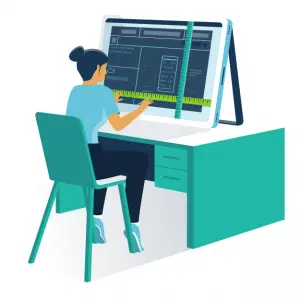
Sounds pretty complicated right? In a nutshell, Dale’s Cone of Experience showcases how we can use a variety of materials and mediums to maximise learner experiences.
Known in some circles as the ‘Learning Pyramid’, Dale’s Cone of Experience is one of the most commonly misrepresented learning theories.
But before we clear up the misconceptions, let’s take a step back and learn more about Edgar Dale, the father of the Cone of Experience.
Who Is Edgar Dale?
Edgar Dale was born in 1900, and he grew up on a family farm in North Dakota, United States. He earned both his Bachelors and Masters degrees from the University of North Dakota and made his way as a teacher in a small rural school.
Dale completed his PhD at the University of Chicago and joined the Eastman Kodak Company. Nowadays simply known as Kodak, the company remains a dominant player in the photography industry.
This can be seen as the start of his research career. After all, Dale completed some of the earliest studies on learning from film while at Eastman Kodak Company.
After this, Dale enjoyed a long career as a professor at Ohio State University (1929-1970). He also served as President of the Division of Visual Instruction of the National Education Association (NEA), now known as the Association for Educational Communication and Technology.
In addition to mentoring doctoral students and working as a professor, Dale made significant contributions in many areas of research. To name a few, his work includes:
- How to Appreciate Motion Pictures ( 1933 )
- Teaching with Motion Pictures ( 1937 )
- Audiovisual Methods in Teaching ( 1946 , 1954 , 1969 )
- Building a Learning Environment ( 1972 )
- The Living Word Vocabulary: The Words We Know ( 1976 )
- The Educator’s Quotebook ( 1984 )
According to Wagner (1970) , Dale used his position to fight relentlessly for a better school system, academic freedom and civil rights.
The Cone of Experience
In his first edition of Audiovisual Methods in Teaching ( 1946 ), Dale introduced the ‘Cone of Experience’. The Cone placed different educational media and methods in a continuum from the most concrete experiences at the bottom to the most abstract at the top.
When a learner moves from direct and purposeful experiences to verbal symbols, the degree of abstraction gradually grows. And as a result, learners become spectators rather than participants.
Learners can see, handle, taste, touch, feel and smell the most purposeful experiences. By contrast, verbal symbols, such as use of words, speech or auditory language, at the peak of the Cone are highly abstract. This means they do not have a physical resemblance to the objects or ideas in question.
As such, the Cone of Experience explains the interrelationships of the various types of media and their individual ‘positions’ in the learning process. This makes it a valuable tool that helps instructional designers and L&D professionals incorporate the right audiovisual materials into their classroom or online training interventions.
However, Dale’s Cone of Experience has been widely misrepresented. Let’s have a look at the common misconceptions!
‘Corrupted Cone’ – Common Misconceptions
Dale intended to produce an intuitive model of the concreteness of various kinds of audiovisual media. However, the model has been widely and frequently misunderstood and misused.
The Cone is often wrongly referred to as the ‘Cone of Learning’, ‘Learning Pyramid’ or ‘Remembering Cone’. What some refer to as the ‘corrupted cone’ is now widely misunderstood as Dale’s Cone of Experience.
Let’s play a game of spot the difference. The illustration directly below is what most share as the ‘Cone of Experience’. You’ve probably seen it before, on social media, or in an article about effective learning approaches.
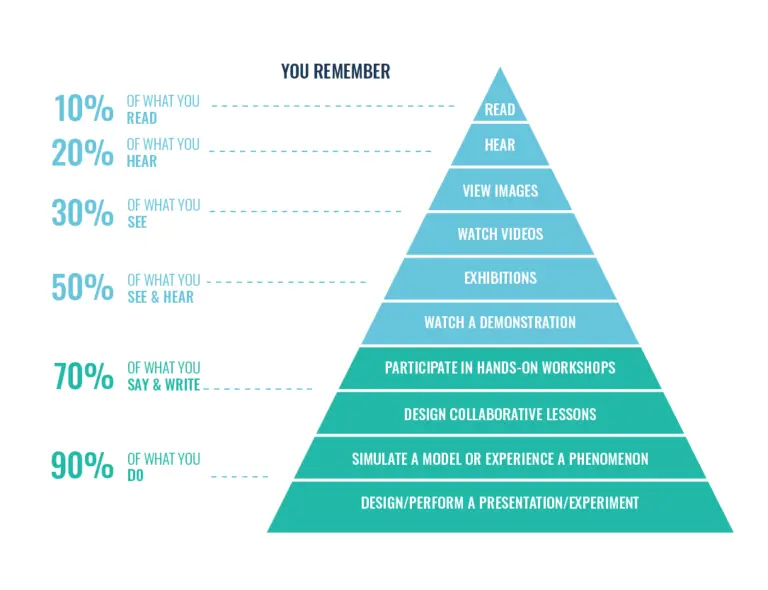
We’ll come to discover that this cone is completely bogus. It’s the cone below that accurately represents the levels Edgar Dale introduced in his original model. We’ll dig into the detail in the next section.
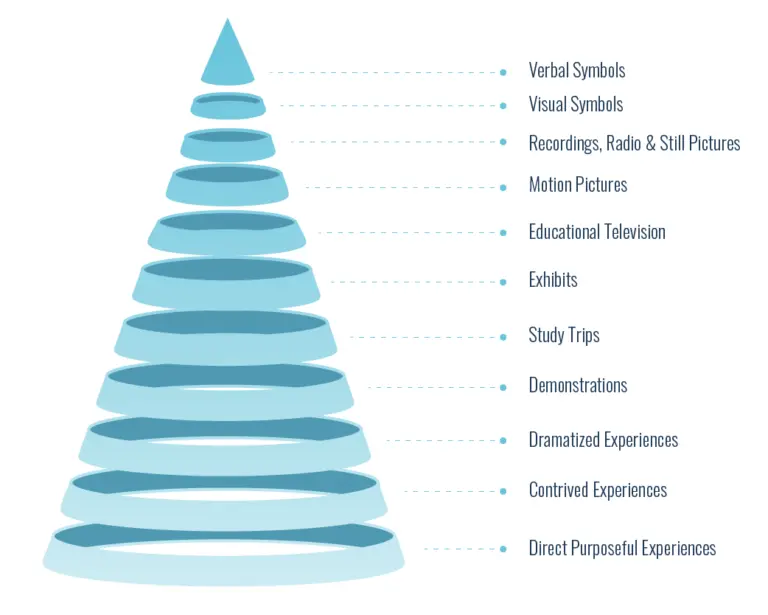
Mythical Retention Scores
As we can see from the illustrations, the corrupted model purports to inform learners of how much people remember based on how they receive information. According to it, learners generally remember:
- 10% of what they read.
- 20% of what they hear.
- 30% of what they see.
- 50% of what they hear and see.
- 70% of what they say and write.
- And 90% of what do.
Suspiciously round numbers, no? But when you compare the corrupted model to Dale’s actual Cone of Experience, you notice that Dale did not include any numbers or percentages.
In fact, Dale never mentioned the relationship between the level of the Cone and the learners’ level of recall. Instead, he simply used the shape to convey the gradual loss of sensory information in learning interventions.
Still, many educators and learning professionals mistakenly believe that the bogus cone is Dale’s work. And it’s no wonder why! A quick Google search reveals an astonishing number of incorrect attributions.
After seeing how widely the corrupted cone was spreading, Subramony, Molenda, Betrus and Thalheimer combined their powers in an attempt to debunk the myths. They have since published various articles ( 2014a , 2014b , 2014c ) on the topic, and they even have a website focusing on the corrupted cone.
According to their research , the retention data, referring to the percentages seen in the corrupted cone, dates back to ‘folkloric maxims’ from the early 1900s. And while several authors and publications mention such percentages (without the cone), none provide a source for the research.
As such, it doesn’t come as a surprise that these magical retention percentages can be seen to fluctuate significantly. After all, this retention data is not supported by empirical data .
Misunderstood Application
On top of these mystical retention percentages, Dale’s Cone of Experience has been misapplied for decades. For instance, some interpret the model as suggesting that direct learning experiences are inherently better than the more abstract audiovisual experiences offered at the top of the cone.
But this is far from how Dale intended his Cone to be used. In his 1969 edition of Audiovisual Methods in Teaching, Dale notes that the Cone is merely a visual analogy. It shows the progression of learning experiences from the concrete to the abstract.
The shape had nothing to do with deciding that one kind of experience is better than another. It is not a hierarchy of learning efficiency. In fact, Dale even explained that too much reliance on concrete experience may actually obstruct the process of meaningful generalisation.
And on top of all that, Dale actually advised his readers not to take the cone too literally in the first place! He intended the Cone to be a descriptive model, instead of a roadmap for lesson or training planning.
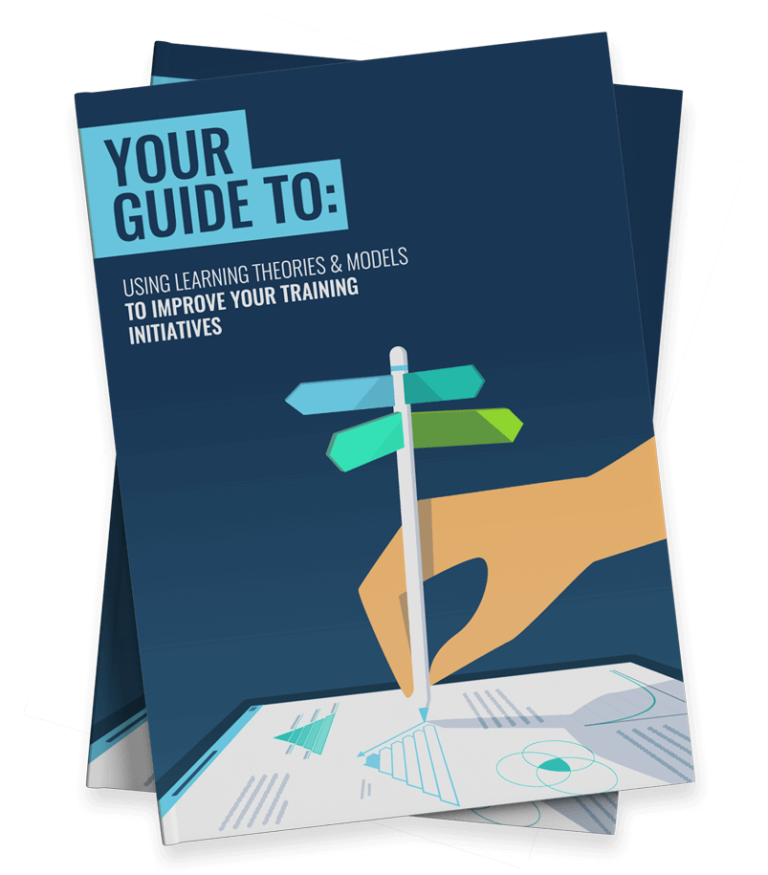
Using Learning Theories & Models to improve your training initiatives

The Cone Uncorrupted
Now that we have overcome some of the misconceptions, let’s have a look at the eleven levels of Dale’s authentic Cone of Experience.
The base of the model is characterised by more concrete experiences. These include direct experiences, contrived experiences and dramatic participation.
The middle of the Cone is slightly more abstract, where learners observe without action. These experiences are less concrete than the lower levels, as learners do not interact directly with the phenomenon.
The peak of the Cone displays the most abstract experiences, which are represented with limited degrees of realism by symbols. These include visual and verbal symbols, like listening to the spoken word.
As such, the arrangement of the levels in the Cone is not based on its difficulty. Instead, it focuses on abstraction and the number of senses involved. Instructional designers can mix and interrelate these experiences to foster more meaningful learning.
Let’s have a look at each level individually, working our way down the Cone!
11. Verbal Symbols
As explored, each level of the Cone moves the learner a step further away from real-life experiences. As such, experiences focusing only on the use of verbal symbols are the furthest removed from real life.
Verbal symbols are highly abstract as they bear no physical resemblance to the objects or ideas they stand for. In fact, these verbal symbols provide no visual representation or clues to their meaning.
Dale used the word ‘horse’ to illustrate this. Writing the word ‘horse’ does not look like a horse, sound like a horse or feel like a horse. In fact, the letters H-O-R-S-E don’t look, sound, smell, taste, or feel anything like the actual animal.
This is true, regardless of the language you use. For instance, you spell a horse as ‘hevonen’ in Finnish, ‘cheval’ in French or ‘hest’ in Danish. Fun words, no doubt, but none of them resemble the animal itself. Instead, they share a common meaning that native speakers often learn at a very young age.
10. Visual Symbols
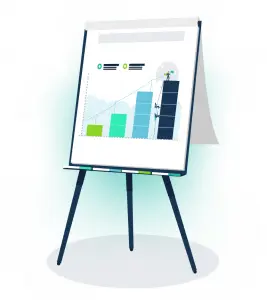
The other highly abstract level includes visual symbols, such as charts, maps, graphs and diagrams that are used for conceptual representation. These visual symbols help to make just about any reality into something easier to understand.
In fact, from sports team logos to traffic signs, we see symbols everywhere. These symbols help people understand the world . Just as with verbal symbols, visual symbols help drive understanding by conveying a meaning that is shared by the rest of society.
Visual symbols often include simple illustrations that do not include any unnecessary detail. This makes them relatively easy to procure and prepare. And that’s what every instructional designer wants to hear, right?
9. Recordings, Radio and Still Pictures
Edgar Dale first created this model in 1946. As such, he included the multimedia assets of his time, such as recordings, radio and still pictures. In more modern terms, this level could include photos, podcasts or audio files.
If you go back to the ‘corrupted cone’, one of the common misrepresentations treats ‘seeing’ as more effective than ‘hearing’.
Yet, Dale placed visual and auditory media on a similar level of abstraction. After all, in both cases, you are merely observing visual symbols (like still photos) or verbal symbols (like audio recordings). Neither example actively asks anything of the learner.
8. Motion Pictures and 7. Educational Television
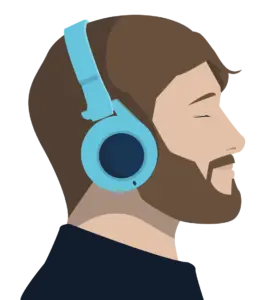
Most recent publications combine levels eight and seven into one category. After all, motion pictures and television are similar mediums. They enable learners to process real-life processes or events through on-screen recordings.
Motion pictures and educational television include, for example, videos, animations and tv programmes, which imply value and messages through moving pictures. These are abstract experiences, as learners focus on observation instead of active participation.
As a result, learners have little or no opportunity to participate in or use senses other than seeing and hearing. But while streaming experiences can’t recreate the richness of reality, videos do present an on-screen abstraction of real-life processes and events.
In fact, videos are effective for presenting movement and continuity of ideas. You could even say that motion pictures and television provide a ‘window to the world’.
This has benefits when it comes to using videos in training. After all, you can edit out any irrelevant parts, zoom in on details, highlight information, or slow things down to provide focus. Learners can also rewind and replay the video as many times as they need to.
However, there is much controversy surrounding the benefits and disadvantages of television and motion pictures. Yet, research shows that educational programmes can enhance children’s intellectual development and provide experiences that are otherwise unreachable.
6. Exhibits
The sixth level of Dale’s Cone of Experience moves us away from the most abstract experiences. This is the first level that opens the door for an expanded range of sensory and participatory experiences.
In fact, this level can be summarised as meaningful displays with limited handling. After all, most exhibits are experiences that are for the eyes only. Yet, some exhibits include sensory elements that can be related to direct purposeful experiences. These exhibits are specifically designed for interactivity.
As a result, this experience allows learners to see the meaning and relevance of things based on the different pictures and representations presented. Visiting exhibits in educational outlets like museums are a common way to provide learning opportunities .
After all, exhibits are a great way to present students with exposure to new ideas, discoveries and inventions that would be more difficult to display in a classroom setting.
5. Study Trips
Study trips offer the sights and sounds of real-world settings. The main activity focuses on observing from the sidelines, aside from occasional opportunities to participate. Participation could include, for instance, hopping in a fire truck or milking a cow.
These rich experiences help learners to learn more about different objects, systems and situations. As such, study trips provide an opportunity to experience something that learners cannot be encounter within the traditional classroom space.
Similarly, field trips expand the social learning opportunities provided by online learning. As a result, the learning experience is not limited to the traditional training setting but rather extended to a more complex environment.
The effectiveness of field trips has been researched extensively . They are well regarded , given how easy it is to provide every student with the same real-life experience.
In addition, students can see connections between their training experiences and the ‘real world’. This type of elaboration is known to be an effective learning technique .
4. Demonstrations
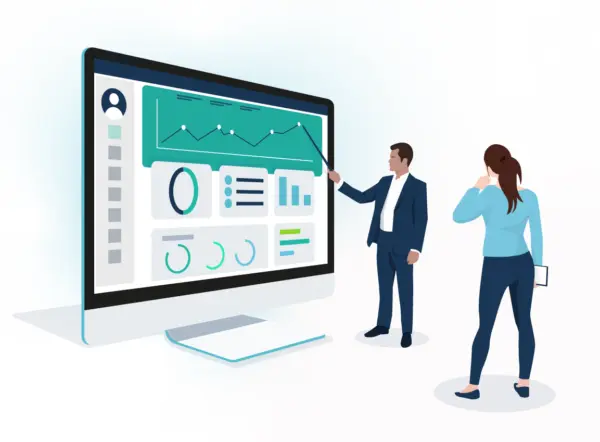
A demonstration is a visualised explanation of facts, ideas or processes. They are a common way to train employees or students, as they require relatively little preparation and resources. After all, individuals observe a lot simply by watching others.
On top of that, demonstrations can include pictures, drawings, film and other types of media in order to facilitate clear and effective learning. This approach helps to showcase how individuals can complete these tasks in real life.
Like exhibits and field trips, demonstrations may or may not include an element of participation. As such, demonstrations sit in the middle of the Cone based on their abstraction.
Demonstrations are especially useful if a hands-on activity is logistically unfeasible. However, demonstrations don’t come without limitations! Learners may not interpret or conceive the information as well as intended. Other factors affect the learning experience too. For instance, some learners may have worse visibility of the demonstration.
Similarly, demonstrations alone may not be enough in all learning situations. After all, seeing how a task is done is rarely as good as trying to do it ourselves.
3. Dramatised Experiences
Dramatised experiences can be seen as role-play exercises. This means reconstructing situations for learning purposes. As a result, the third level involves shifting learners — at least some of them — from observers to active participants.
This enables learners to participate in reconstructed experiences that could give them a better understanding of the idea or concept. In this manner, dramatising real-life experiences can help learners to get closer to certain realities that are not easily available first-hand.
They also provide a safe environment for experimentation. For instance, it’s much better to fail in a sales negotiation role-play than it is to fail in real life.
Learners can become more familiar with the concepts as they emerge themselves into the “as-if” situation. Similarly, learners can observe their peers to take their learning even further! This enables them to compare and contrast what they may have done differently.
2. Contrived Experiences
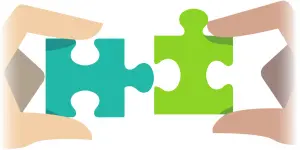
The second level is called contrived experiences, which focuses on the ‘editing’ of reality. At this level, teachers use representative models and mock-ups to provide an experience that is as close to reality as possible.
This can make the concept easier to grasp. After all, some realities are far too complex to take in all at once. As such, contrived experiences are imitations that sometimes teach better than the realities they imitate.
Contrived experiences are very practical and make the learning experience more accessible. After all, they have a concrete nature that permits easy visualization and helps to foster a better understanding of the concept at hand. And on top of all that, contrived experiences are easier to manipulate or operate!
1. Direct Purposeful Experiences
The bottom level of Dale’s Cone of Experience is also the least abstract. Direct purposeful experiences are hands-on activities that grant us responsibility for driving a specific outcome. We are active agents in the learning experience. In a sense, direct purposeful experiences are an unabridged version of life itself.
These rich, full-bodied experiences can be considered the bedrock of all education. After all, learners can see, handle, taste, feel, touch and smell these experiences. As such, at this level, learners use more senses in order to build up their knowledge.
Learners learn by doing tasks themselves. As a result, learning happens through actual hands-on experiences.
The Relevance of Cone of Experience
The Cone of Experience was first created decades ago, in 1946. And even decades after his passing, Dale’s work continues to influence the educational technologies field. Its utility in selecting instructional resources and activities is just as practical today as when Dale created the Cone.
The Cone has also inspired the birth of other models. For instance, Baukal et al. (2013) built upon Dale’s ideas and created the Multimedia Cone of Abstraction .
Even though Dale himself recommended not to take the model too seriously, it does guide us in creating effective learning environments. Let’s take a look!
The Cone in Learning And Development
In his 1969 version of Audiovisual Methods in Teaching, Dale introduced ‘rich experiences’. According to Dale, effective learning environments should offer memorable and rich experiences where learners can use multiple senses. He characterised rich experiences as follow:
- Students use their eyes, ears, noses, mouths and hands to explore and immerse the experience.
- Learners have the chance to discover new experiences.
- Training events are emotionally rewarding and will motivate participants to continue learning throughout their lives.
- Students have the opportunity to reflect on their past experiences to create new experiences.
- Learners get a sense of personal achievement.
- And students can create their own dynamic experiences.
As such, it is clear that no one level of Dale’s Cone of Experience is sufficient to generate a ‘rich’ learning experience. With this in mind, instructional designers should focus on creating memorable learning experiences where learners can see, hear, taste, touch and try.
Furthermore, we need to take advantage of other media. As long as all mediums are beneficial for your learners, you can combine as many as you wish.
Learning Strategies
Dale thought that the school system forced students to memorise information instead of actually learning how to think or solve real problems. Unfortunately, the current school system has been criticised for adopting the same approach.
For this reason, Dale argued that we should use revolutionary approaches to improve the quality of educational learning environments. One way to do this is to introduce a range of audiovisual materials to create vivid and memorable learning experiences. Like Dale ( 1969 , p. 23) describes:
“Thus, through the skillful use of radio, audio recording, television, video recording, painting, line drawing, motion picture, photograph, model, exhibit, poster, we can bring the world to the classroom. We can make the past come alive either by reconstructing it or by using records of the past.”
In other words, instructional designers must implement learning strategies fuelled by interaction. They can do so by introducing modern learning techniques.
In fact, a growing body of research shows that training interventions that use well-designed multimedia content are more effective than those that don’t. Text only learning interventions could soon be a thing of the past.
Indeed, to get the best results, instructional designers should mix approaches, balancing concrete and abstract experiences. This helps them to cater to and address all learner needs in order to help each learner in their learning journey.
Modern Learning Technology
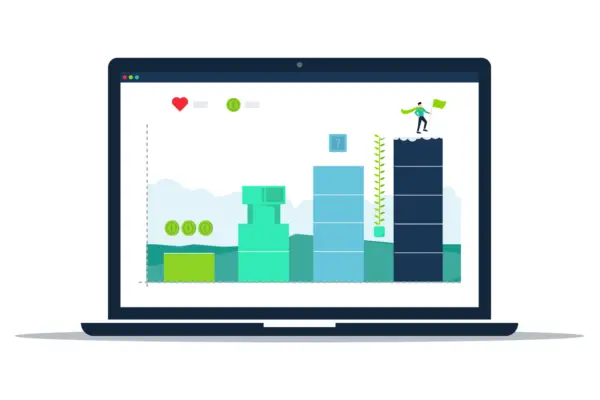
Luckily, current learning technology makes this easier than ever before! Growth Engineering LMS , for instance, lets you use a variety of content types to build your training plan. This empowers you to create rich experiences.
This can range from your regular PDFs and slideshows to video and audio files, not to forget virtual classroom sessions and informal learning opportunities. In fact, innovative social learning features ensure learners can discover and create their own dynamic experiences.
Gamification , on the other hand, helps learners to get a sense of personal achievement as they accrue Experience Points (XP) or climb up the Leaderboard . Gamification is also utilised for the most immersive learning strategies, whereby learners physically participate in their training content. This resembles real-life situations and processes.
In addition, some of our modern forms of multimedia were not available when Dale created his Cone of Experience. For instance, virtual reality and augmented reality are relatively new additions to training. These inventions have the potential to showcase extremely realistic simulations that help to create contrived learning experiences.
Similarly, some of the elements in Dale’s Cone, like educational television, are not as relevant today as they were when Dale first created his model. But according to recent research , one could easily update the Cone to tally harmoniously with modern technology.
However, while these assets and approaches help you to create rich training experiences, it’s essential to get the balance right. As such, you should vary your content formats and broader concepts to facilitate effective and meaningful learning.
Final Words
Dale’s Cone of Experience is a wildly misunderstood model. Despite this, it remains useful even for today’s weathered instructional designers.
After all, it showcases how we can use a variety of materials and mediums to maximise learner experiences. It also helps us to think about the sensory impact of our learning content.
Still, if you only take away one thing from this article, let it be this: don’t go around telling people that you only remember 10% of what you read!
If you would like to learn more about different learning models and theories, check out our guidebook ‘ Using Learning Theories & Models to Improve Your Training Initiatives ’ now!
Using Learning Theories & Models to Improve Your Training Strategy

Like What You're Reading? Join the Growth Squad!
Table of contents, read more about learning theory , online learning.
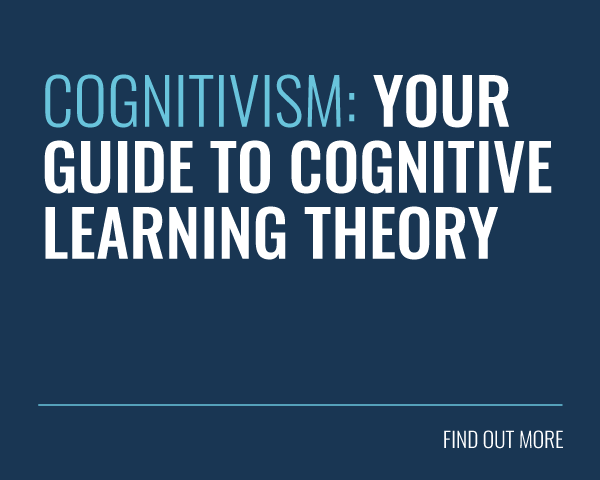
Cognitivism: Your Guide to Cognitive Learning Theory
Demystify learning with Cognitive Learning Theory! Explore how your mind works & unlock effective learning strategies.
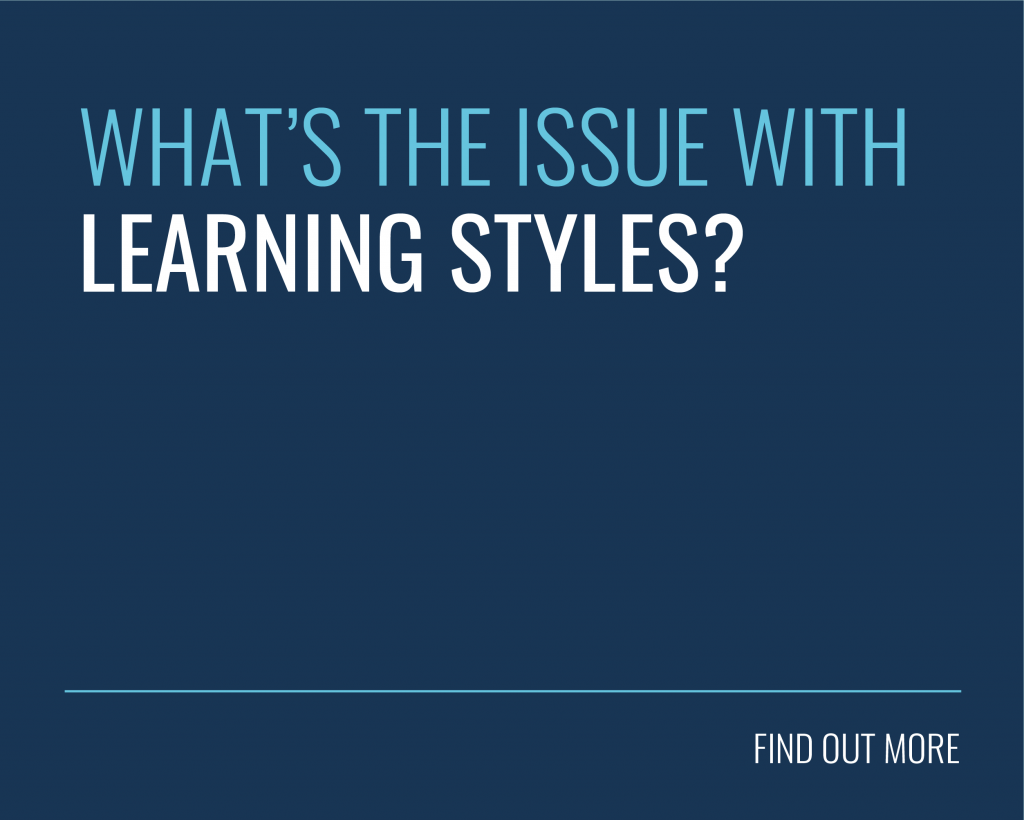
The Truth About Learning Styles: A Deep Dive Into Learner Preferences
What’s the real deal with learning styles? This article post goes beyond the surface level to explore the research, benefits and limitations.
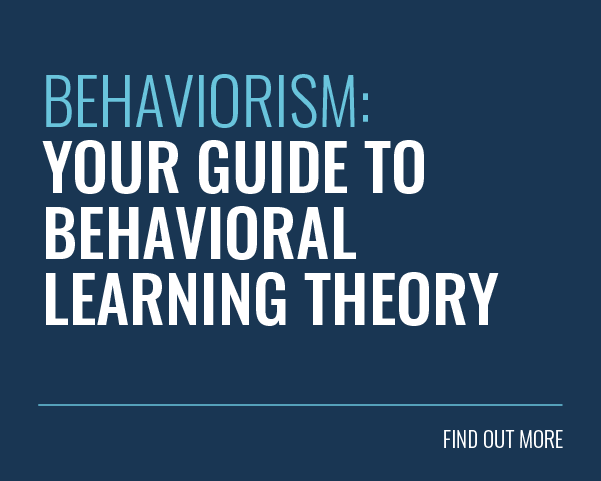
Behaviorism: Your Complete Guide to Behavioral Learning Theory
When used properly, behavioral learning theory has the power to transform L&D initiatives. Learn the best practices and how to combat any issues that may arise here.

FREE RESOURCES
Unlock The World’s Most Impactful L&D Resources!
Our unrivalled treasure trove of white papers, research, tip sheets, infographics and more gives you all the L&D knowledge you need to start making an impact today. Happy exploring!
Want to create or adapt books like this? Learn more about how Pressbooks supports open publishing practices.
Sang Joon Lee and Thomas C. Reeves
Editor’s Note: The following chapter was based on the following article, previously published in Educational Technology.
Lee, S. J., & Reeves, T. C. (2007). Edgar Dale: A significant contributor to the field of educational technology. Educational Technology, 47 (6), 56.
How can teachers use audiovisual materials to promote learning that persists? How can audiovisual materials enable students to enjoy learning through vicarious experience? These were two of the many important research and development questions addressed by an extraordinary educational technology pioneer, Edgar Dale. Although he is perhaps best remembered today for his often misinterpreted “Cone of Experience,” Dale made significant contributions in many areas as evidenced by just a few of the titles of the many books he wrote during his long lifespan (1900-1988), including: How to Appreciate Motion Pictures (1933), Teaching with Motion Pictures (1937), How to Read a Newspaper (1941), Audiovisual Methods in Teaching (1946, 1954, 1969), Techniques of Teaching Vocabulary (1971), Building a Learning Environment (1972), The Living Word Vocabulary: The Words We Know (1976), and The Educator’s Quotebook (1984).
Born in 1900 at the dawn of a new millennium, Edgar Dale’s work continues to influence educational technologists in the 21st Century. Dale grew up on a North Dakota farm, and according to Wagner (1970), he retained the no-nonsense thinking habits and strong work ethic of his Scandinavian forebears throughout his illustrious career. While working on the family farm and later as a teacher in a small rural school, Dale earned both his Bachelors and Masters degrees from the University of North Dakota partially through correspondence courses.
In 1929, he completed a Ph.D. at the University of Chicago, and then joined the Eastman Kodak Company where he collaborated on some of the earliest studies of learning from film. Interestingly, although many of these early studies were experimental ones designed to compare learning from film with other media, Dale later expressed distain for such studies. According to De Vaney and Butler (1996):
When Dale was asked why he did not do experimental research in which a scholar attempted to prove over and over that students learn from radio or film, he replied: “It always bothers me, because anybody knows that we learn from these things (media). There’s no issue about that. . . . Well I suppose in any field, to be respectable you have to do a certain kind of research. (p. 17)
In addition to his own prolific scholarship, Edgar Dale mentored an outstanding cadre of doctoral students during his long role as a professor at Ohio State University (1929-1973), including Jeanne Chall and James Finn. Dale also served as President of the Division of Visual Instruction (DVI) of the National Education Association (NEA) from 1937-38, the professional association that is now known as the Association for Educational Communications and Technology (AECT).
Although he traced his ideas back as far as Pestalozzi (1746 – 1827), who pioneered the concept of learning through activity, and Froebel (1782 – 1852), who first promoted the principle that children have unique needs and capabilities, Edgar Dale’s work was most heavily influenced by John Dewey (1859-1952). Dewey stressed the importance of the continuity of learning experiences from schools into the real world and argued for a greater focus on higher order outcomes and meaningful learning.
In his first edition of Audiovisual Methods in Teaching (1946), Dale expanded Dewey’s concept of the continuity of learning through experience by developing the “Cone of Experience” which relates a concrete to abstract continuum to audiovisual media options (Seels, 1997). Dale (1969) regarded the Cone as a “visual analogy” (p. 108) to show the progression of learning experiences from the concrete to the abstract (see Figure 1) rather than as a prescription for instruction with media. In the last edition of Audiovisual Methods in Teaching (1969), Dale integrated Bruner’s (1966) three modes of learning into the Cone by categorizing learning experiences into three modes: enactive (i.e., learning by doing), iconic (i.e., learning through observation), and symbolic experience (i.e., learning through abstraction).
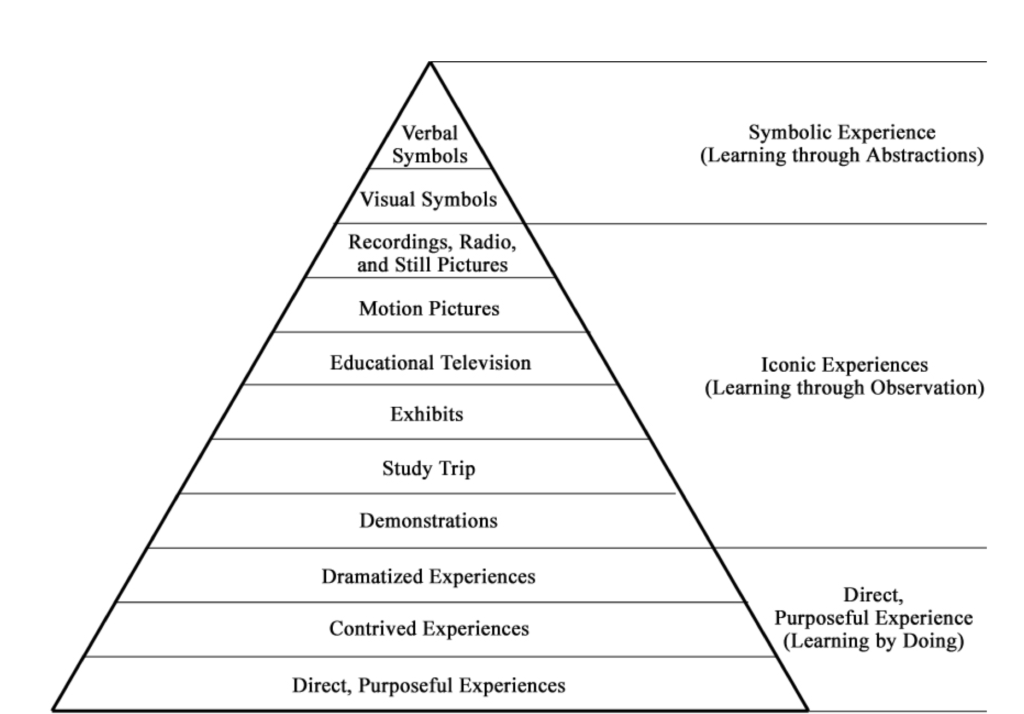
In moving toward the pinnacle of the Cone from direct, purposeful experiences to verbal symbols, the degree of abstraction gradually increases. As a result, learners become spectators rather than participants (Seels, 1997). The bottom of the Cone represented “purposeful experience that is seen, handled, tasted, touched, felt, and smelled” (Dale, 1954, p. 42). By contrast, at the top of the Cone, verbal symbols (i.e., words) and messages are highly abstract. They do not have physical resemblance to the objects or ideas. As Dale (1969) wrote, “The word horse as we write it does not look like a horse or sound like a horse or feel like a horse” (p. 127).
Dale (1969) explained that the broad base of the cone illustrated the importance of direct experience for effective communication and learning. Especially for young children, real and concrete experiences are necessary to provide the foundation of their permanent learning. The historical importance of Dale’s Cone rests in its attempt to relate media to psychological theory (Seels, 1997) and the Cone has shaped various sets of media selection guidelines ever since. For example, influenced by Dale, Briggs (1972) delineated general principles for media selection according to the age of learners, the type of learners, and the type of task.
Current Application
Dale’s Cone of Experience continues to influence instructional designers today in both theory and practice. For example, Baukal, Auburn, and Ausburn built upon Dale’s ideas in developing their Multimedia Cone of Abstraction , available at http://files.eric.ed.gov/fulltext/EJ1101723.pdf .
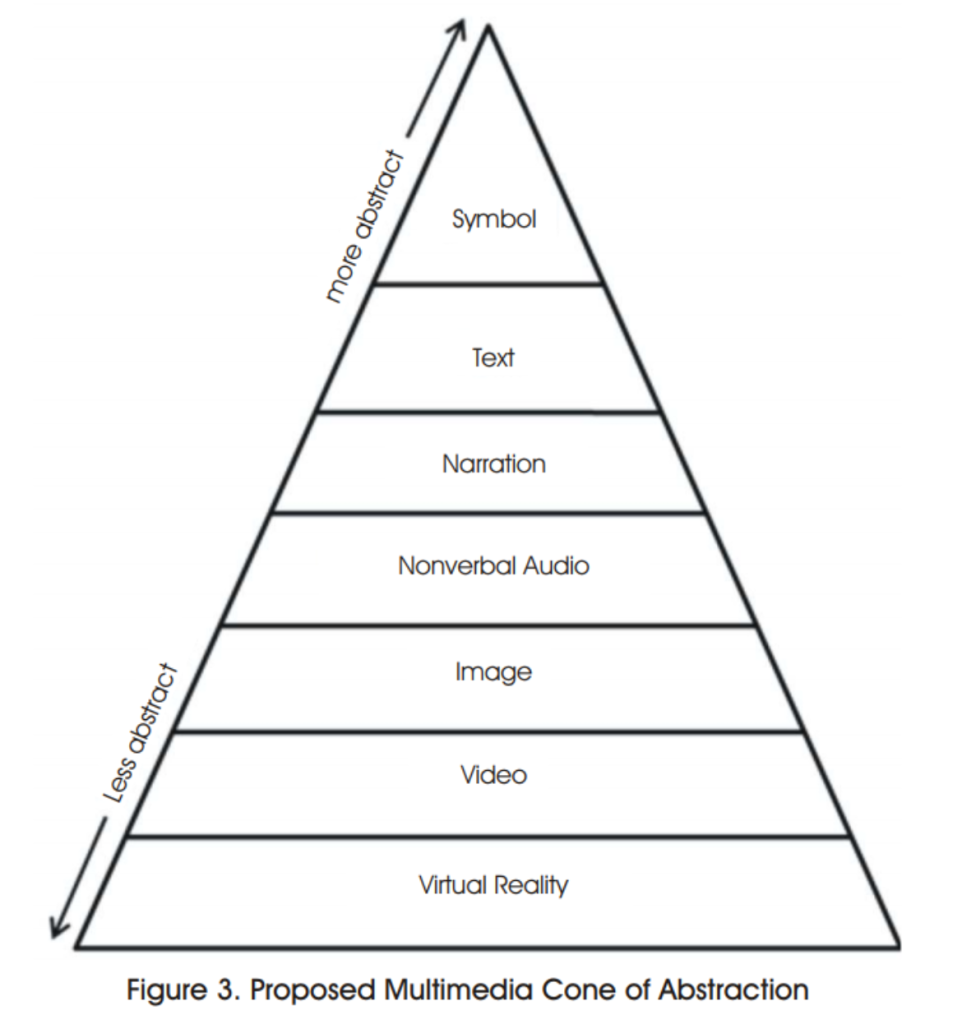
In addition to this confusion, the implications of Dale’s Cone have been misunderstood or misapplied. For example, Dale’s Cone has been used to maintain that more realistic and direct experience is always better. However, Dale (1969) demurred, writing that, “Too much reliance on concrete experience may actually obstruct the process of meaningful generalization” (p. 130). Also, Dale noted that providing realistic learning experiences may not be efficient in terms of cost, time, and efforts. Instead, Dale suggested that teachers should balance combinations of concrete and abstract learning experiences.
For a thorough analysis of the prevalence of the “Remembering Cone” myth in instructional design, along with analysis tracing the history of this myth and the evidence against it, see the final issue in 2014 of Educational Technology , which presented a special issue on the topic.
While learning by doing (direct, purposeful experience) may be better than learning through abstraction (symbolic experience), explain why you think Dale (1969) felt that “Too much reliance on concrete experience may actually obstruct the process of meaningful generalization.”
Experiential Learning Environments
In another book Can You Give The Public What It Wants (1967), Dale reiterated Dewey’s influence on his ideas by writing: “As I return to Democracy and Education [published by Dewey in 1916] I always find a new idea that I had not seen or adequately grasped before” (p. 186). Dale (1969) described learning as a “fourfold organic process” (p. 42) which consisted of needs, experiences, incorporation of the experiences, and the use of them. To promote permanent learning, Dale asserted that teachers should help students identify their needs for learning and set clearly defined learning goals related to their needs. A learning experience must be personally meaningful with respect to students’ backgrounds and developmental stages and the nature of the experience should be logically arranged to help students incorporate new knowledge with what they already have. Later, students should have opportunities to practice and try out their new knowledge in real life as well as in learning contexts. Dale (1972) wrote:
To experience an event is to live through it, to participate in it, to incorporate it, and to continue to use it. To experience is to test, to try out. It means to be a concerned participant, not a half-attentive observer. (p. 4)
Thus, effective learning environments should be filled with rich and memorable experiences where students can see, hear, taste, touch, and try. Dale (1969) articulated the characteristics of rich experiences. In a rich experience:
- students are immersed in it and use their eyes, ears, noses, mouths and hands to explore the experience,
- students have a chance to discover new experiences and new awareness of them,
- students have emotionally rewarding experiences that will motivate them for learning throughout their lives,
- students have chances to practice their past experiences and combine them to create new experiences,
- students have a sense of personal achievement, and
- students can develop their own dynamic experiences.
In Dale’s perspective (1972), most students in schools did not learn how to think, discover, and solve real problems. Rather, students were forced to memorize facts and knowledge in most schools, and as a result, any knowledge they acquired was inert in their real lives. For this reason, he argued that we should have revolutionary approaches to improve the quality of educational learning environments. To build learning environments infused with rich experiences, Dale argued for the development of new materials and methods of instruction. Dale promoted the potential of audiovisual materials, believing that they could provide vivid and memorable experiences and extend them regardless of the limitations of time and space. Dale (1969) argued:
Thus, through the skillful use of radio, audio recording, television, video recording, painting, line drawing, motion picture, photograph, model, exhibit, poster, we can bring the world to the classroom. We can make the past come alive either by reconstructing it or by using records of the past. (p. 23)
Dale believed that audiovisual materials could help students learn from others’ first-hand experience, or vicarious experience. Dale (1967) claimed, “Audiovisual materials furnish one especially effective way to extend the range of our vicarious experience” (p. 23). Dale concluded that audiovisual materials could provide a concrete basis for learning concepts, heighten students’ motivation, encourage active participation, give needed reinforcement, widen student experiences and improve the effectiveness of other materials.
Although as noted above, Dale (1969) did not advocate comparative media studies, he did recommend evaluating combinations of media and instructional materials in actual learning environments. Amazingly, Dale anticipated the direction of media research as if he had been privy to the Great Media Debate between Clark (1994) and Kozma (1994). Dale (1969) provided an analogy:
As we think about freight cars and their contents we can and do distinguish them. But the vehicle and its contents are closely linked. The gondola car is linked with coal: we do not haul oil in it. The piggy-back conveyances for transporting automobiles are not used to transport wheat. In all communicating of messages, therefore, we must consider the kind of vehicle used to transport them, realizing that medium-message characteristics will influence what can be “sent” to a receiver. (p. 133)
Dale recommended that researchers should look at the effects of combinations of media in the environment where they will be used rather than the testing of a single, isolated medium in the laboratory. By conducting research in real classrooms, the varied combinations of possible factors such as attributes of audiovisual materials, how to use and administer them, learners’ characteristics, and learning environments could be examined because learning occurs through dynamic interaction among the learner, the context, and the media. Although the experimental methods of educational and psychological research were focused on testing the tenets of behaviorism and pitting one media against another throughout most of his career, Dale was prescient in his recognition that the complexities of learning render most such studies fruitless.
Final Remark s
Dale was much more than a scholar isolated in the ivory towers of academe. As described by Wagner (1970), “He actively fought for better schools, academic freedom, civil rights, and other causes long before these became popular issues” (p. 94). Dale also anticipated the still-neglected importance of media education by promoting in the 1930s the then radical notion that teachers should help their students to understand the effects of media on them, their parents, and society, and to learn how to critically evaluate the contents of the radio, newspapers, and films. Dale was a socially responsible researcher, a thoughtful humanist, and dedicated educator. Any educational technologist seeking inspiration for their work in our field would find no better role model than Edgar Dale.
Application Exercises
- Think about your most memorable learning experience. How was it (or how was it not) a “rich experience” as defined by Dale?
- Dale felt that a rich experience would be “emotionally rewarding” and “motivate [learners] for learning throughout their lives.” Describe an experience you have had that was emotionally rewarding and motivated you to continue learning throughout your life.
- Why does Dale suggest teachers balance their time providing concrete and abstract teaching opportunities?
Briggs, L. J. (1972). Students’ guide to handbook of procedures for the design of instruction . Pittsburgh, PA: American Institutes for Research.
Bruner, J. S. (1966). Toward a theory of instruction . Cambridge, MA: Harvard University.
Clark, R. E. (1994). Media will never influence learning. Educational Technology Research and Development, 42 (2), 21-29.
Dale, E. (1933). How to appreciate motion pictures . New York: Macmillan Company.
Dale, E. (1935). The content of motion pictures . New York: Macmillan Company.
Dale, E. (1937). Teaching with motion pictures . Washington, DC: American Council on Education.
Dale, E. (1941). How to read a newspaper . Chicago: Scott Foresman & Company.
Dale, E. (1946). Audiovisual methods in teaching . New York: Dryden Press.
Dale, E. (1954). Audiovisual methods in teaching (Revised ed.). New York: Dryden Press.
Dale, E. (1967). Can you give the public what it wants? New York: World Book Encyclopedia and Cowles Education Corporation.
Dale, E. (1969). Audiovisual methods in teaching (3rd ed.). New York: Dryden Press.
Dale, E. (1972). Building a learning environment . Bloomington, IN: Phi Delta Kappa Foundation.
Dale, E. (1984). The educator’s quotebook . Bloomington, IN: Phi Delta Kappa.
Dale, E., & O’Rourke, J. (1971). Techniques of teaching vocabulary . Elgin, IL: Dome.
Dale, E., & O’Rourke, J. (1976). The living word vocabulary: The words we know . Elgin, IL: Dome.
De Vaney, A., & Butler, R. P. (1996). Voices of the founders: Early discourses in educational technology. In D. H. Jonassen (Ed.), Handbook of research for educational communications and technology (pp. 3-45). New York: Macmillan.
Dewey, J. (1938). Experience and education . London: Collier-Macmillian.
Kozma, R. B. (1994). Will media influence learning? Reframing the debate. Educational Technology Research and Development, 42 (2), 7-19.
Molenda, M. (2003). Cone of Experience. In A. Kovalchick & K. Dawson (Eds.), Education and Technology: An Encyclopedia . Santa Barbara, CA: ABC-CLIO. Retrieved May 17, 2007, from http://www.indiana.edu/~molpage/publications.html
Seels, B. (1997). The relationship of media and ISD theory: The unrealized promise of Dale’s Cone of Experience. (ERIC Document Reproduction Service No. ED 409 869). Retrieved October 23, 2006, from http://eric.ed.gov/ERICWebPortal/Home.portal
Subramony, D. P. (2003). Dale’s cone revisited: Critical examining the misapplication of a nebulous theory to guide practice. Educational Technology , 43(4), 25-30.
Wagner, R. W. (1970). Edgar Dale: Professional, Theory into Practice , 9 (2), 89-95.
Edgar Dale and the Cone of Experience Copyright © 2018 by Sang Joon Lee and Thomas C. Reeves. All Rights Reserved.
Share This Book
- Acknowledgements
- Introduction
- List of Authors
- Author Index
- I. Definitions and History
- 1. The Proper Way to Become an Instructional Technologist
- 2. What Is This Thing Called Instructional Design?
- 3. History of LIDT
- 4. A Short History of the Learning Sciences
- 5. LIDT Timeline
- 6. Programmed Instruction
- 7. Edgar Dale and the Cone of Experience
- 8. Twenty Years of EdTech
- II. Learning and Instruction
- 10. Intelligence
- 11. Behaviorism, Cognitivism, Constructivism
- 12. Sociocultural Perspectives of Learning
- 13. Learning Communities
- 14. Communities of Innovation
- 15. Motivation Theories and Instructional Design
- 16. Motivation Theories on Learning
- 17. Informal Learning
- 18. Overview of Problem-Based Learning
- 19. Connectivism
- 20. An Instructional Theory for the Post-Industrial Age
- 21. Using the First Principles of Instruction to Make Instruction Effective, Efficient, and Engaging
- III. Design
- 22. Instructional Design Models
- 23. Design Thinking and Agile Design
- 24. What and how do designers design?
- 25. The Development of Design-Based Research
- 26. A Survey of Educational Change Models
- 27. Performance Technology
- 28. Defining and Differentiating the Makerspace
- 29. User Experience Design
- IV. Technology and Media
- 30. United States National Educational Technology Plan
- 31. Technology Integration in Schools
- 32. K-12 Technology Frameworks
- 33. What Is Technological Pedagogical Content Knowledge?
- 34. The Learner-Centered Paradigm of Education
- 35. Distance Learning
- 36. Old Concerns with New Distance Education Research
- 37. Open Educational Resources
- 38. The Value of Serious Play
- 39. Video Games and the Future of Learning
- 40. Educational Data Mining and Learning Analytics
- 41. Opportunities and Challenges with Digital Open Badges
- V. Becoming an LIDT Professional
- 42. The Moral Dimensions of Instructional Design
- 43. Creating an Intentional Web Presence
- 44. Where Should Educational Technologists Publish Their Research?
- 45. Rigor, Influence, and Prestige in Academic Publishing
- 46. Educational Technology Conferences
- 47. Networking at Conferences
- 48. PIDT, the Important Unconference for Academics
- VI. Preparing for an LIDT Career
- 49. What Are the Skills of an Instructional Designer?
- 50. Careers in Academia: The Secret Handshake
- 51. Careers in K-12 Education
- 52. Careers in Museum Learning
- 53. Careers in Consulting
- Final Reading Assignment
- Index of Topics
- Translations
Edgar Dale and the Cone of Experience
Choose a sign-in option.
Tools and Settings
Questions and Tasks
Citation and Embed Code

Editor’s Note
The following chapter was based on the following article, previously published in Educational Technology .
Lee, S. J., & Reeves, T. C. (2007). Edgar Dale: A significant contributor to the field of educational technology. Educational Technology, 47 (6), 56.
How can teachers use audiovisual materials to promote learning that persists? How can audiovisual materials enable students to enjoy learning through vicarious experience? These were two of the many important research and development questions addressed by an extraordinary educational technology pioneer, Edgar Dale. Although he is perhaps best remembered today for his often misinterpreted “Cone of Experience,” Dale made significant contributions in many areas as evidenced by just a few of the titles of the many books he wrote during his long lifespan (1900-1988), including: How to Appreciate Motion Pictures (1933), Teaching with Motion Pictures (1937), How to Read a Newspaper (1941), Audiovisual Methods in Teaching (1946, 1954, 1969), Techniques of Teaching Vocabulary (1971), Building a Learning Environment (1972), The Living Word Vocabulary: The Words We Know (1976), and The Educator’s Quotebook (1984).
Born in 1900 at the dawn of a new millennium, Edgar Dale’s work continues to influence educational technologists in the 21st Century. Dale grew up on a North Dakota farm, and according to Wagner (1970), he retained the no-nonsense thinking habits and strong work ethic of his Scandinavian forebears throughout his illustrious career. While working on the family farm and later as a teacher in a small rural school, Dale earned both his Bachelors and Masters degrees from the University of North Dakota partially through correspondence courses.
In 1929, he completed a Ph.D. at the University of Chicago, and then joined the Eastman Kodak Company where he collaborated on some of the earliest studies of learning from film. Interestingly, although many of these early studies were experimental ones designed to compare learning from film with other media, Dale later expressed distain for such studies. According to De Vaney and Butler (1996):
When Dale was asked why he did not do experimental research in which a scholar attempted to prove over and over that students learn from radio or film, he replied: “It always bothers me, because anybody knows that we learn from these things (media). There’s no issue about that. . . . Well I suppose in any field, to be respectable you have to do a certain kind of research. (p. 17)
In addition to his own prolific scholarship, Edgar Dale mentored an outstanding cadre of doctoral students during his long role as a professor at Ohio State University (1929-1973), including Jeanne Chall and James Finn. Dale also served as President of the Division of Visual Instruction (DVI) of the National Education Association (NEA) from 1937-38, the professional association that is now known as the Association for Educational Communications and Technology (AECT).
Although he traced his ideas back as far as Pestalozzi (1746 – 1827), who pioneered the concept of learning through activity, and Froebel (1782 – 1852), who first promoted the principle that children have unique needs and capabilities, Edgar Dale’s work was most heavily influenced by John Dewey (1859-1952). Dewey stressed the importance of the continuity of learning experiences from schools into the real world and argued for a greater focus on higher order outcomes and meaningful learning.
In his first edition of Audiovisual Methods in Teaching (1946), Dale expanded Dewey’s concept of the continuity of learning through experience by developing the “Cone of Experience” which relates a concrete to abstract continuum to audiovisual media options (Seels, 1997). Dale (1969) regarded the Cone as a “visual analogy” (p. 108) to show the progression of learning experiences from the concrete to the abstract (see Figure 1) rather than as a prescription for instruction with media. In the last edition of Audiovisual Methods in Teaching (1969), Dale integrated Bruner’s (1966) three modes of learning into the Cone by categorizing learning experiences into three modes: enactive (i.e., learning by doing), iconic (i.e., learning through observation), and symbolic experience (i.e., learning through abstraction).
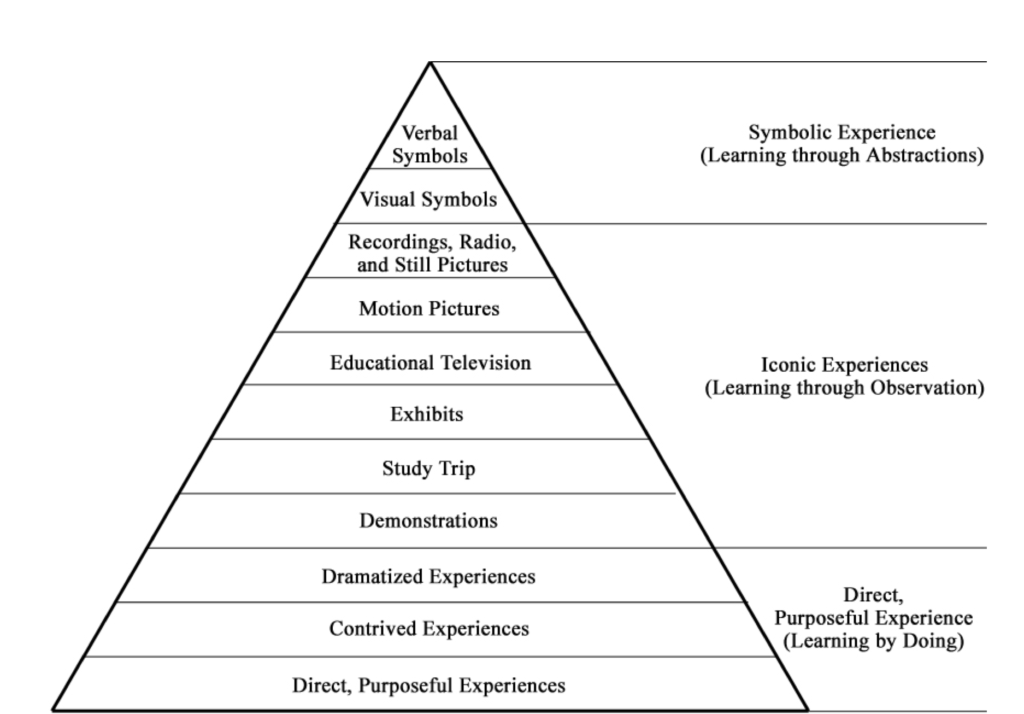
In moving toward the pinnacle of the Cone from direct, purposeful experiences to verbal symbols, the degree of abstraction gradually increases. As a result, learners become spectators rather than participants (Seels, 1997). The bottom of the Cone represented “purposeful experience that is seen, handled, tasted, touched, felt, and smelled” (Dale, 1954, p. 42). By contrast, at the top of the Cone, verbal symbols (i.e., words) and messages are highly abstract. They do not have physical resemblance to the objects or ideas. As Dale (1969) wrote, “The word horse as we write it does not look like a horse or sound like a horse or feel like a horse” (p. 127).
Dale (1969) explained that the broad base of the cone illustrated the importance of direct experience for effective communication and learning. Especially for young children, real and concrete experiences are necessary to provide the foundation of their permanent learning. The historical importance of Dale’s Cone rests in its attempt to relate media to psychological theory (Seels, 1997) and the Cone has shaped various sets of media selection guidelines ever since. For example, influenced by Dale, Briggs (1972) delineated general principles for media selection according to the age of learners, the type of learners, and the type of task.
Current Application
Dale’s Cone of Experience continues to influence instructional designers today in both theory and practice. For example, Baukal, Auburn, and Ausburn built upon Dale’s ideas in developing their Multimedia Cone of Abstraction [https://edtechbooks.org/-Yq] , available at https://edtechbooks.org/-Yq .
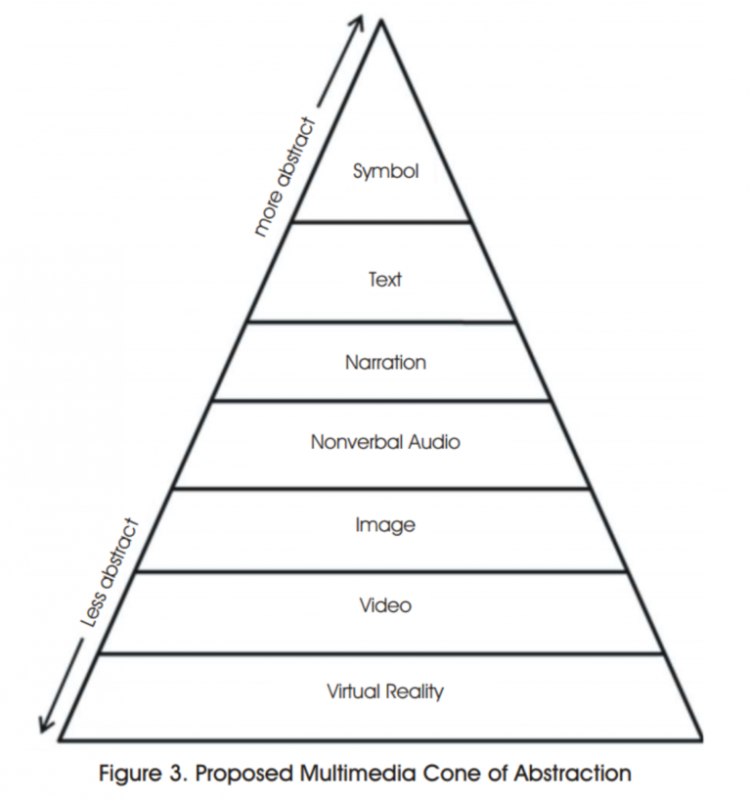
Multimedia Cone of Abstraction
As noted above, Dale’s Cone has been frequently misunderstood and misused. Dale’s Cone is often confounded with the “Remembering Cone” or “Bogus Cone” (Subramony, 2003, p. 27) which claims that learners will generally remember 10 percent of what they read, 20 percent of what they hear, 30 percent of what they see, 50 percent of what they hear and see, 70 percent of what they say, and 90 percent of what they both say and do. Even though Dale did not mention the relationship between the level of the Cone and a learner’s level of recall, many practitioners mistakenly believe that the bogus “Remembering Cone” was Dale’s work. A Google search reveals an astonishing number of attributions of the “Bogus Cone” to Edgar Dale. Molenda (2003) concludes that the so-called empirical evidence for the “Remembering Cone” appears to have been fabricated by petroleum industry trainers in the 1960s.
In addition to this confusion, the implications of Dale’s Cone have been misunderstood or misapplied. For example, Dale’s Cone has been used to maintain that more realistic and direct experience is always better. However, Dale (1969) demurred, writing that, “Too much reliance on concrete experience may actually obstruct the process of meaningful generalization” (p. 130). Also, Dale noted that providing realistic learning experiences may not be efficient in terms of cost, time, and efforts. Instead, Dale suggested that teachers should balance combinations of concrete and abstract learning experiences.
Further Reading
Application exercises, experiential learning environments.
In another book Can You Give The Public What It Wants (1967), Dale reiterated Dewey’s influence on his ideas by writing: “As I return to Democracy and Education [published by Dewey in 1916] I always find a new idea that I had not seen or adequately grasped before” (p. 186). Dale (1969) described learning as a “fourfold organic process” (p. 42) which consisted of needs, experiences, incorporation of the experiences, and the use of them. To promote permanent learning, Dale asserted that teachers should help students identify their needs for learning and set clearly defined learning goals related to their needs. A learning experience must be personally meaningful with respect to students’ backgrounds and developmental stages and the nature of the experience should be logically arranged to help students incorporate new knowledge with what they already have. Later, students should have opportunities to practice and try out their new knowledge in real life as well as in learning contexts. Dale (1972) wrote:
To experience an event is to live through it, to participate in it, to incorporate it, and to continue to use it. To experience is to test, to try out. It means to be a concerned participant, not a half-attentive observer. (p. 4)
Thus, effective learning environments should be filled with rich and memorable experiences where students can see, hear, taste, touch, and try. Dale (1969) articulated the characteristics of rich experiences. In a rich experience:
- students are immersed in it and use their eyes, ears, noses, mouths and hands to explore the experience,
- students have a chance to discover new experiences and new awareness of them,
- students have emotionally rewarding experiences that will motivate them for learning throughout their lives,
- students have chances to practice their past experiences and combine them to create new experiences,
- students have a sense of personal achievement, and
- students can develop their own dynamic experiences.
In Dale’s perspective (1972), most students in schools did not learn how to think, discover, and solve real problems. Rather, students were forced to memorize facts and knowledge in most schools, and as a result, any knowledge they acquired was inert in their real lives. For this reason, he argued that we should have revolutionary approaches to improve the quality of educational learning environments. To build learning environments infused with rich experiences, Dale argued for the development of new materials and methods of instruction. Dale promoted the potential of audiovisual materials, believing that they could provide vivid and memorable experiences and extend them regardless of the limitations of time and space. Dale (1969) argued:
Thus, through the skillful use of radio, audio recording, television, video recording, painting, line drawing, motion picture, photograph, model, exhibit, poster, we can bring the world to the classroom. We can make the past come alive either by reconstructing it or by using records of the past. (p. 23)
Dale believed that audiovisual materials could help students learn from others’ first-hand experience, or vicarious experience. Dale (1967) claimed, “Audiovisual materials furnish one especially effective way to extend the range of our vicarious experience” (p. 23). Dale concluded that audiovisual materials could provide a concrete basis for learning concepts, heighten students’ motivation, encourage active participation, give needed reinforcement, widen student experiences and improve the effectiveness of other materials.
Although as noted above, Dale (1969) did not advocate comparative media studies, he did recommend evaluating combinations of media and instructional materials in actual learning environments. Amazingly, Dale anticipated the direction of media research as if he had been privy to the Great Media Debate between Clark (1994) and Kozma (1994). Dale (1969) provided an analogy:
As we think about freight cars and their contents we can and do distinguish them. But the vehicle and its contents are closely linked. The gondola car is linked with coal: we do not haul oil in it. The piggy-back conveyances for transporting automobiles are not used to transport wheat. In all communicating of messages, therefore, we must consider the kind of vehicle used to transport them, realizing that medium-message characteristics will influence what can be “sent” to a receiver. (p. 133)
Dale recommended that researchers should look at the effects of combinations of media in the environment where they will be used rather than the testing of a single, isolated medium in the laboratory. By conducting research in real classrooms, the varied combinations of possible factors such as attributes of audiovisual materials, how to use and administer them, learners’ characteristics, and learning environments could be examined because learning occurs through dynamic interaction among the learner, the context, and the media. Although the experimental methods of educational and psychological research were focused on testing the tenets of behaviorism and pitting one media against another throughout most of his career, Dale was prescient in his recognition that the complexities of learning render most such studies fruitless.
Final Remarks
Dale was much more than a scholar isolated in the ivory towers of academe. As described by Wagner (1970), “He actively fought for better schools, academic freedom, civil rights, and other causes long before these became popular issues” (p. 94). Dale also anticipated the still-neglected importance of media education by promoting in the 1930s the then radical notion that teachers should help their students to understand the effects of media on them, their parents, and society, and to learn how to critically evaluate the contents of the radio, newspapers, and films. Dale was a socially responsible researcher, a thoughtful humanist, and dedicated educator. Any educational technologist seeking inspiration for their work in our field would find no better role model than Edgar Dale.
- Think about your most memorable learning experience. How was it (or how was it not) a “rich experience” as defined by Dale?
- Dale felt that a rich experience would be “emotionally rewarding” and “motivate [learners] for learning throughout their lives.” Describe an experience you have had that was emotionally rewarding and motivated you to continue learning throughout your life.
- Why does Dale suggest teachers balance their time providing concrete and abstract teaching opportunities?
Briggs, L. J. (1972). Students’ guide to handbook of procedures for the design of instruction . Pittsburgh, PA: American Institutes for Research.
Bruner, J. S. (1966). Toward a theory of instruction . Cambridge, MA: Harvard University.
Clark, R. E. (1994). Media will never influence learning. Educational Technology Research and Development, 42 (2), 21-29.
Dale, E. (1933). How to appreciate motion pictures . New York: Macmillan Company.
Dale, E. (1935). The content of motion pictures . New York: Macmillan Company.
Dale, E. (1937). Teaching with motion pictures . Washington, DC: American Council on Education.
Dale, E. (1941). How to read a newspaper . Chicago: Scott Foresman & Company.
Dale, E. (1946). Audiovisual methods in teaching . New York: Dryden Press.
Dale, E. (1954). Audiovisual methods in teaching (Revised ed.). New York: Dryden Press.
Dale, E. (1967). Can you give the public what it wants? New York: World Book Encyclopedia and Cowles Education Corporation.
Dale, E. (1969). Audiovisual methods in teaching (3rd ed.). New York: Dryden Press.
Dale, E. (1972). Building a learning environment . Bloomington, IN: Phi Delta Kappa Foundation.
Dale, E. (1984). The educator’s quotebook . Bloomington, IN: Phi Delta Kappa.
Dale, E., & O’Rourke, J. (1971). Techniques of teaching vocabulary . Elgin, IL: Dome.
Dale, E., & O’Rourke, J. (1976). The living word vocabulary: The words we know . Elgin, IL: Dome.
De Vaney, A., & Butler, R. P. (1996). Voices of the founders: Early discourses in educational technology. In D. H. Jonassen (Ed.), Handbook of research for educational communications and technology (pp. 3-45). New York: Macmillan.
Dewey, J. (1938). Experience and education . London: Collier-Macmillian.
Kozma, R. B. (1994). Will media influence learning? Reframing the debate. Educational Technology Research and Development, 42 (2), 7-19.
Molenda, M. (2003). Cone of Experience. In A. Kovalchick & K. Dawson (Eds.), Education and Technology: An Encyclopedia . Santa Barbara, CA: ABC-CLIO. Retrieved May 17, 2007, from http://www.indiana.edu/~molpage/publications.html
Seels, B. (1997). The relationship of media and ISD theory: The unrealized promise of Dale’s Cone of Experience. (ERIC Document Reproduction Service No. ED 409 869). Retrieved October 23, 2006, from http://eric.ed.gov/ERICWebPortal/Home.portal
Subramony, D. P. (2003). Dale’s cone revisited: Critical examining the misapplication of a nebulous theory to guide practice. Educational Technology , 43(4), 25-30.
Wagner, R. W. (1970). Edgar Dale: Professional, Theory into Practice , 9 (2), 89-95.

This content is provided to you freely by EdTech Books.
Access it online or download it at https://edtechbooks.org/lidtfoundations/edgar_dale .
Experiential Learning (Definition + Examples)

“Go to your room and think about what you’ve done!”
You’ve heard parents say this to their kids before. The child has done something bad, and the parents want to teach them a lesson.
In reality, the child will probably go to their room and pout. But if they were to reflect on their experience, they would probably think about the connection between their behavior and the consequences. When they do A , B happens. If they were to do C , B probably wouldn’t happen.
Whether you are a child who has been scolded for disobeying their parents or a person learning a new skill, this reflection process is vital to experiential learning. In this video, I will explain experiential learning, the processes in which we use experiential learning, and how this helps us grow and develop throughout our lives.
What is Experiential Learning?
It’s pretty easy to guess the definition of experiential learning. It’s learning through experience. But to understand how this happens, we must understand how reflection plays a role in this process.
We are meaning-making creatures. When something happens to us, particularly something negative, our brain wants to make sense of it. Yes, we got an F on a test - but why? Our invention didn’t work - but why?
After we experience something, we can learn from that experience through reflection. Sometimes, this reflection is done consciously. We ask ourselves, “What actions led to me missing the basket?” or “What contributed to my success in budgeting this year?” However, this reflection does not have to be conscious or purposeful for experiential learning to happen.
Experiential learning begins early in life. The first stage of cognitive development, as theorized by Jean Piaget, is the sensorimotor stage. It lasts from birth to age two. During this stage, babies realize that actions have consequences, even if they don’t have a language to articulate them. They learn to walk after falling over and over again, trying new things until they hold themselves up long enough to walk across the room.
David Kolb’s Learning Model
David Kolb is renowned for his model of experiential learning. According to Kolb, experiential learning involves four steps. Each step can be divided into two processes individuals use to grasp and transform their experiences.
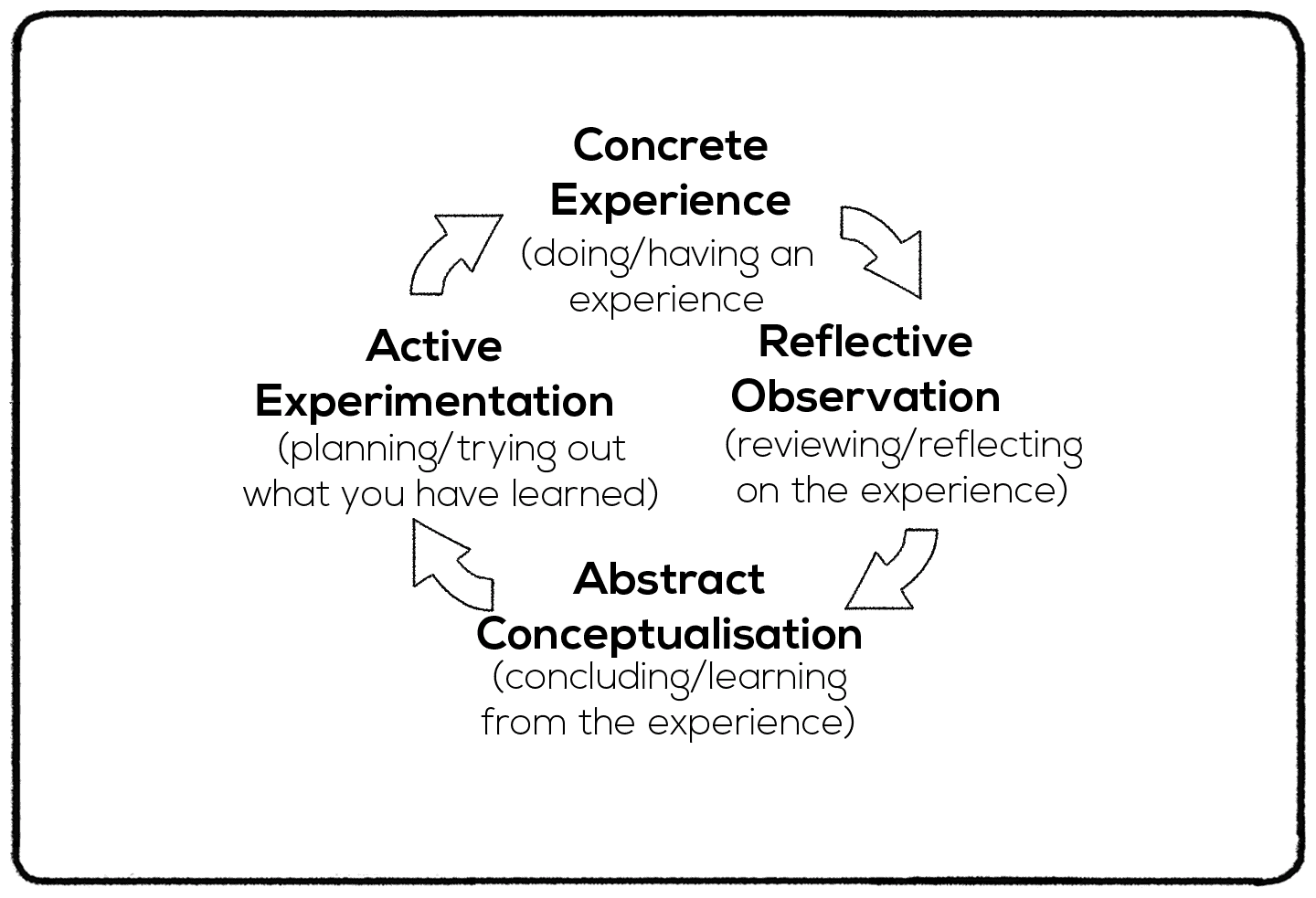
Beginning with the process of grasping an experience, individuals can rely on the following:
- Concrete Experience or
- Abstract Conceptualization.
For those familiar with the Myers-Briggs Type Indicator (MBTI), these processes resonate with the third letter of the MBTI types: 'F' for Feeling and 'T' for Thinking. Specifically, Feeling parallels Concrete Experience, where individuals absorb information based on emotions and direct experiences. On the other hand, Thinking mirrors Abstract Conceptualization, where individuals lean more toward logical analysis and systematic planning. Numerous studies have shown consistency in these MBTI categorizations, further strengthening the analogy.
Once an experience is grasped, individuals then transform it through:
- Reflective Observation or
- Active Experimentation.
Here, we can draw parallels with another aspect of the MBTI. Reflective Observation aligns with Introversion, characterized by introspection and contemplation. Conversely, Active Experimentation is akin to Extroversion, where individuals are more action-oriented and learn through interaction.
Each MBTI type has a descriptive title, like ENTJs being termed “The Commanders” or INFPs as “The Empath.” Similarly, Kolb provides titles based on individuals' predominant learning styles:
- Concrete Experience + Active Experimentation : "The Accommodators."
- Concrete Experience + Reflective Observation : "The Divergers."
- Abstract Conceptualization + Active Experimentation : "The Convergers."
- Abstract Conceptualization + Reflective Observation : "The Assimilators."
The intersection of MBTI and Kolb's model suggests that our personality traits might influence our preferred learning styles, offering educators and learners valuable insights into personalized education.
Limitations
Of course, this is not an end-all, be-all theory to how people learn. Kolb’s theory of experiential learning does have limitations. It doesn’t address how group work and collaboration affect reflection, nor does it address ways that we learn without reflection.
Experiential Learning Examples
Experiential learning does happen in the classroom, although not as a traditional lecture. Our experience lies in how we absorb, process, and study information. How do your experiences studying affect your grades? How do your attention and class participation affect how you remember the information later?
Building Skills
Experiential learning is more likely to happen as we build skills. Learning to pitch a fastball requires experiential learning. Interacting appropriately in a business meeting requires experiential learning. Experiential learning is crucial to developing (and building) everyday skills, whether you are actively experimenting or watching others in action.
Playing or Making Music
Music is an excellent example of experiential learning. Did you know that playing an instrument uses more of your brain than any other activity? You are seeing the notes on the page, playing those notes with your hands and feet, and you are experiential learning in real-time. As soon as you hear a note that is out of tune, your brain makes meaning of the experience, and you adjust your breath, the instrument, or whatever is causing the note to sound sour.
Retention of Learning Pyramid
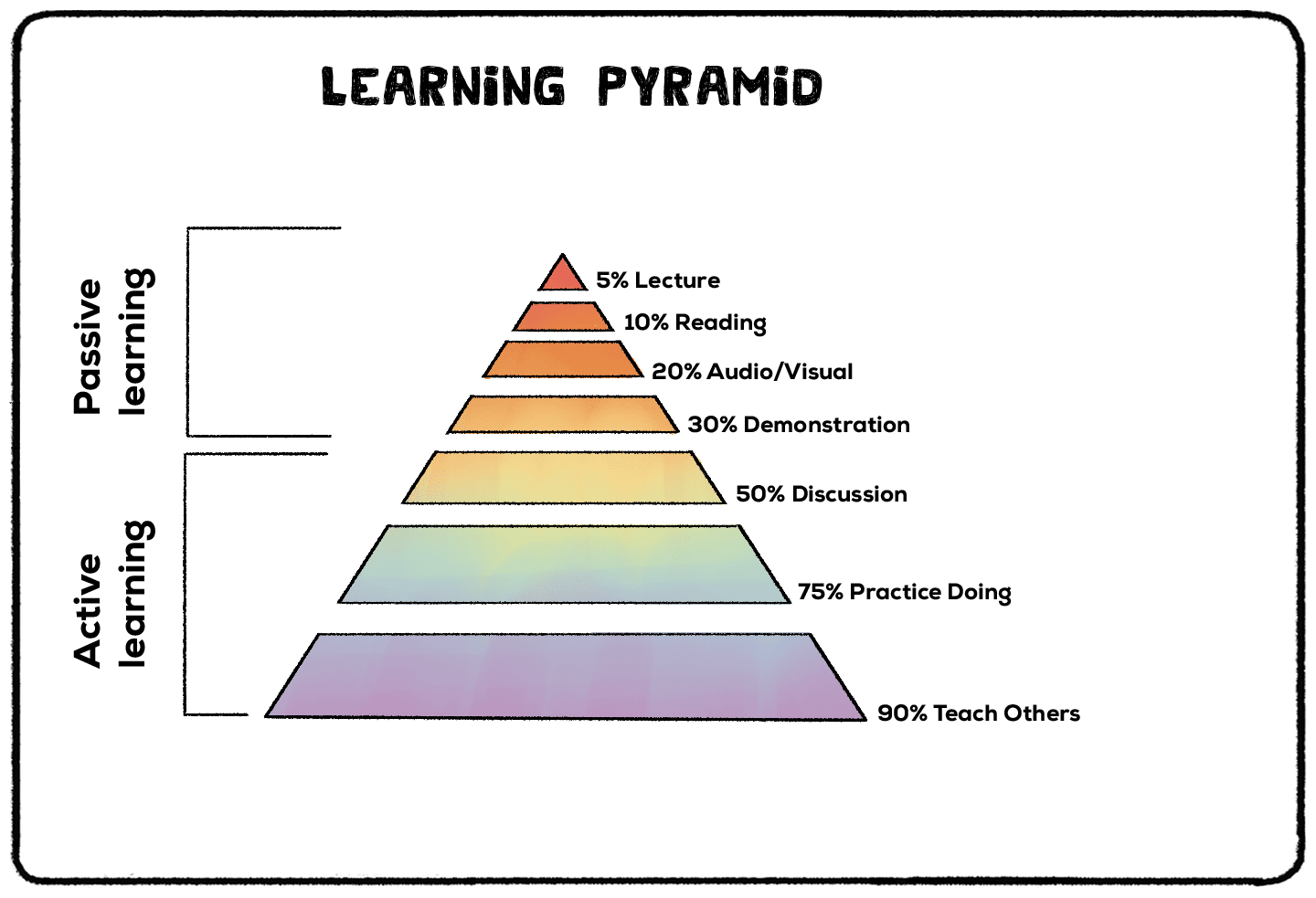
Another form of experiential learning is teaching others. Talk about a hands-on experience with the material. Teaching others a skill or information is arguably one of the best ways to learn and retain the material.
This idea goes back decades to when David Kolb was still a child. In 1946, educator Edgar Dale created a “Cone of Experience.” The cone displays various educational methods, from concrete to abstract experiences. At the top of the cone are “verbal symbols,” and at the bottom are “direct, purposeful experiences.”
The Cone of Experience has undergone quite a makeover since 1946, making it a famous model in education. Nowadays, the Cone of Experience is called the Learning Pyramid. The pyramid shows how much information we retain by hearing it through a lecture, teaching it to others, etc.
At the bottom of the pyramid is teaching others. When we teach others, we engage in experiential learning that applies not only to our experience but also to the experience of others. We have to transform our experience to transform the student’s experience.
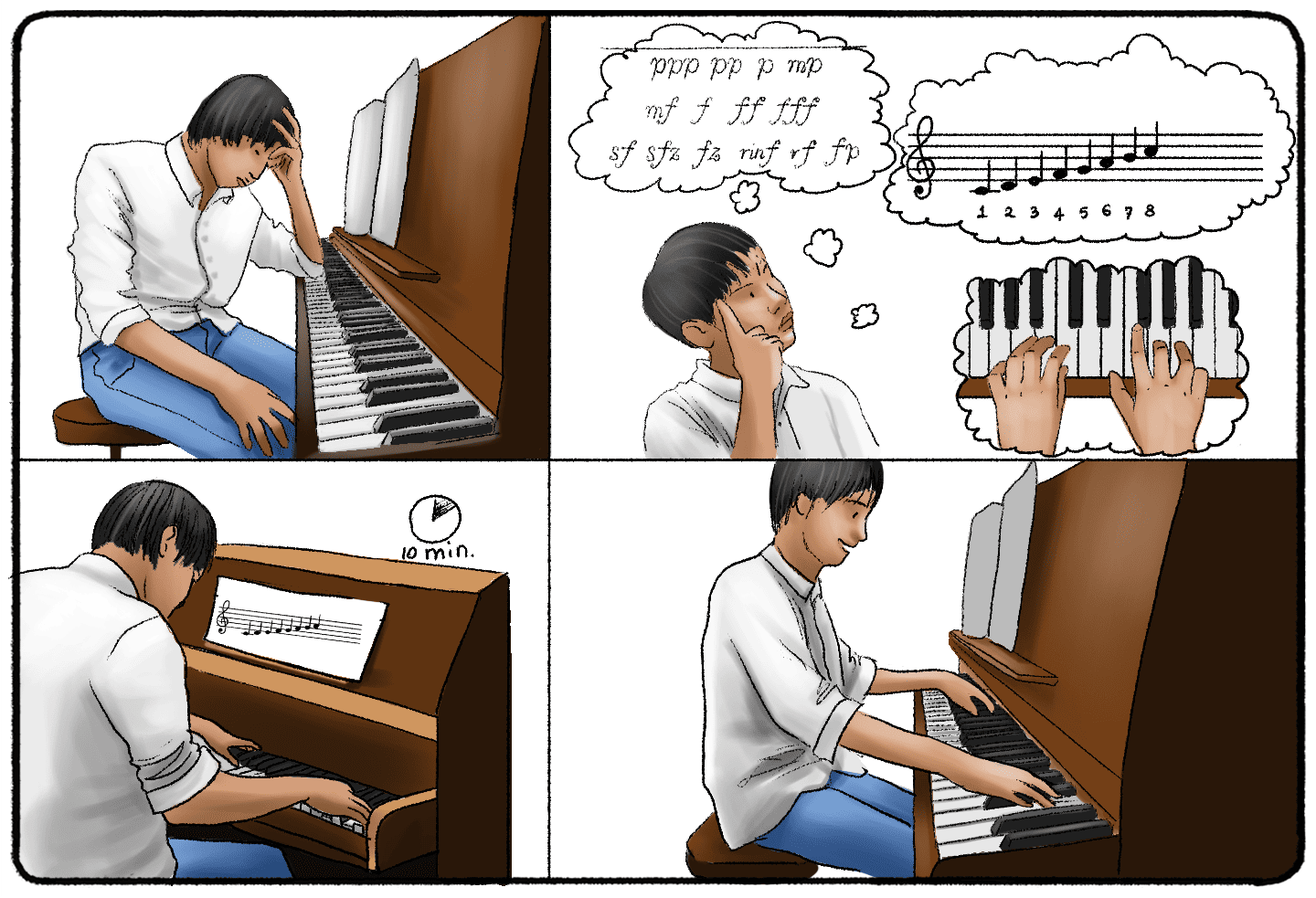
The more consciously you grasp and transform your experience, the more you learn. If you hope to build on your skills or learn something new, it’s time to get out there and do it!
Related posts:
- David Kolb (Psychologist Biography)
- The Psychology of Long Distance Relationships
- Beck’s Depression Inventory (BDI Test)
- Operant Conditioning (Examples + Research)
- 40+ Famous Psychologists (Images + Biographies)
Reference this article:
About The Author

Operant Conditioning
Classical Conditioning
Observational Learning
Latent Learning
Experiential Learning
The Little Albert Study
Bobo Doll Experiment
Spacing Effect
Von Restorff Effect
PracticalPie.com is a participant in the Amazon Associates Program. As an Amazon Associate we earn from qualifying purchases.
Follow Us On:
Youtube Facebook Instagram X/Twitter
Psychology Resources
Developmental
Personality
Relationships
Psychologists
Serial Killers
Psychology Tests
Personality Quiz
Memory Test
Depression test
Type A/B Personality Test
© PracticalPsychology. All rights reserved
Privacy Policy | Terms of Use
- Bachelor of Computer Application (BCA) APPLY NOW
- Engineering | Business | Law APPLY NOW
- Science | Biotechnology | Social-Sciences APPLY NOW
- Medical | Education | Media APPLY NOW
- B.Tech (Computer Science and Engineering ) APPLY NOW
- BBA | MBA APPLY NOW
- B.Sc. in Physics | Chemistry | Maths APPLY NOW

- RICE, The Precursor
- Adamas University
- Vision, Mission & Core Values
- Recognitions And Approvals
- #AdamasUniversityCares
- IdeaPlus Magazine
- Governing Board
- The Chancellor
- The Vice Chancellor
- Pro Vice Chancellor
- The Advisors
- The Registrar
- Adamas Industry Advisory Council
- Welcome Note By The Chancellor
- Adamas University Act 2014
- Adamas Foundation
- AU Vibes, Issue 1 (Jan-June 2022)
- AU Vibes, Issue 2 ( July-Aug 2022)
- Strategic Plan
- Strategic Priorities
- BEST PRACTICES 1
- BEST PRACTICES 2
- Examination Annual Report 2022-23
- AU Annual Report 2021-22
- AU Annual Report 2020-21
- AU Annual Report 2018-19 & 2019-20
- Institutional Development Plan
- PhD Admission winter Semester 2022-23
- Ph.D Regulations
- Ph.D. Merit List 2021-22 Spring Session
- Awards of Grades
- Undergraduate Programs
- Postgraduate Programs
- Ph.D Programs
- Post M.Sc. Diploma in Medical Physics
- PhD Admission Winter Session 2023-24
- Start your application
- Student Credit Card Scheme
- Lateral Entry-Migration
- Declaration Form
- Career Design
- Visit Campus
- Take Virtual Tour
- CDC – Director’s Message
- Our Recruiters
- Placement oriented Training Eco-System
- Placement Internship Policy 2021-22
- Placement Records
- Student Speaks
- Capacity & Skill Enhancement Initiatives
- Internationalisation Strategy
- Top Leadership Team-International Relations
- International Projects
- Partner Universities
- International Application
- Admission Procedure
- Eligibility Qualifications
- Equivalence Certificate
- Information About Visa
- Documents Required
- Summer School 2018
- Summer School 2019
- Global Summer Camp 2023
- ICCTHE 2018
- ICCTHE 2019
- Biotechnology Seminar
- Education Fairs
- ISC-Adamas 2020
- MoU With Foreign Institutions
- International Lecture Series 2024
- Cultural Immersion Program
- Bhutan Delegation 2024
- Our Rankings
- Center For Professional Studies
- Clubs @ Adamas
- Hostel and Food
- Art and Culture
- AU Times Magazine
- Student Counselling Center
- Anti-Ragging policy and committee
- Anti-Discrimination Cell for SC/ST
- Message from the Director
- Message from the Assistant Director, Alumni Relations
- Get Involved
- Alumni – FAQs
- Alumni Contact
- ABOUT ALUMNI
- ALUMNI REUNION 2020
- ALUMNI TALK SHOW
- Alumni Activities
- Placement _ Internship_Policy-2021-22
- National Academic Depository (NAD)
- Student Grievances Redressal
- Photo Gallery
- Video Gallery
- Innovation and Incubation
- Current Vacancies
- Archived Vacancies
- Student Handbook
- Notice Board
You are using an outdated browser. Please upgrade your browser to improve your experience.

Teaching of Geography through Dale’s Cone of Experience

The concept of cone of experience was given by Edger Dale in 1946. The learning experiences are placed at hierarchical manner in the cone with reference to their relative position in the teaching-learning process. This is a visual model which is made of eleven stages starting from concrete experiences at the base of the cone and then it becomes more and more abstract as it reaches the peak. The arrangement in the cone is based on the principle of concretization to abstraction and on the number of senses involved. The more senses are involved in direct, purposeful experience, but it does not mean that concrete experience is the most effective way of getting knowledge. The experiences at each stage can be mixed and are interrelated in order to foster more meaningful learning.

[Source: http://eductechnolojoy.blogspot.com/2013/10/edgar-dales-cone-of experience.html ]
Pupils generally remember 10% of what they read, 20% of what they hear, 30% of what they see, 50% of what they see & hear, 70% of what they say & write and 90% of what they say and do.

[Source: https://teachernoella.weebly.com/dales-cone-of-experience.html ]
Explanation of Learning Experiences with special reference to the Teaching of Geography: Geography is the study of the earth’s surface and it includes physical as well as cultural phenomena under its scope. The Dale’s cone of experience helps teachers to plan different kinds of learning experiences in order to create the most effective learning environment for the purpose of studying geographical contents.
- Direct, purposeful experience: The cone of experience is started with direct, purposeful experience at its base. Here, the knowledge is imparted through the senses that are direct and purposeful. The students learn something by doing something. At this level, students wholeheartedly participate so that active learning is occurred. Teachers can plan for some activities for the purpose of geographical learning.
- Take a glass of water and a card. Then put the card on the top of the glass. Put your palm on the card and gradually turn the glass towards the ground. Then give up your palm. The card will remain stuck to the glass. In this way, students learn about air pressure.
- There are an old newspaper, a used water bottle and a vermilion box. Students are provided with a scissor and a brush. Then they are instructed to do a needful action with these materials. Students can prepare a flower vase with the given materials. In this way, students learn about waste material management.
- Contrived experience: When the real thing cannot be perceived directly, imitation of the real object is preferred for better and easier understanding. At the time of imitation, the contrived object may differ from the original object, but the main idea is depicted through it. Teachers can imitate some geographical phenomena for the purpose of learning.
- An animated video can be prepared for portraying various kinds of plate movement and the formation of fold mountains.
- A simulated model can be planned to show the origin of monsoon.
- Dramatic Participation: Some real events can be presented through role playing. Students actively participate in this type of activities and they can improve their affective as well as psychomotor domains. It encourages creative production of learning and students joyfully participate in the learning process.
- A drama can be prepared on the basis of the theme protective measures at pre-cyclone period, during cyclone period and post-cyclone period.
- A pantomime can be arranged for depicting the cultural diversity of India in terms of language, religion and racial varieties.
- Demonstration: When teachers demonstrate, students receive knowledge through observation and interaction with teachers.
- Teachers can demonstrate rock and mineral samples for describing their properties and identification.
- Teachers can impart the concept of types of volcanoes with the help of various models.
- Teachers can demonstrate a dumpy level and prismatic compass instruments for surveying purposes.
- Field Trips: Field trips are the most inevitable learning experiences for geographical learning. It gives students a hands-on experience. Students can co-relate their classroom learning with real things. They can identify relief features, soil types, rock types, the type of vegetation etc. in the study area. They can analyze the man-environment relationship of the area. They can collect soil samples, water samples, rock samples from the study area. They can prepare a contour plan with the help of dumpy level and prismatic compass instruments. They can determine the long profile and cross profiles along a river with the help of surveying instruments. Students can also plan for market survey, school survey, household survey, hotel survey for assessing the socioeconomic status of the area.
- Exhibition: For the purpose of exhibition, students can prepare a number of things such as charts, models, posters, diorama, photo collage as well as they can demonstrate with different samples, experiments, videos etc. In this way, students can develop their psychomotor skills and communication abilities. Even they can accept the subject in a creative way.
- Students can prepare orographic rainfall model, the model of the interior of the earth, the model of fluvial landforms, glacial landforms, marine landforms etc.
- Students can also plan for some working models such as rain water harvesting, plate movement and associated landforms, solar energy project, formation of cyclones and so on.
- Movie: The movie is the audio-visual teaching aids by which students get iconic and echoic experiences. The motion picture can imitate reality in an effective way so that students’ learning gets concretized. Teachers can arrange some movie shows in school for the purpose of geographical learning. Few movies are:
- No Impact man (2009): Sustainability based movie.
- Ashes to Honey (2011): Nuclear power based movie.
- Polluting Paradise (2012): Waste management based movie.
- Under the Dome (2015): Air pollution based movie.
- Before the Flood (2016): Global climatic change based movie.
- Still Picture: Still pictures are used for the purpose of teaching-learning on the basis of our iconic experiences. The pictures can be projected clearly through projectors.
- Teachers can use still pictures of glacial, fluvial, aeolian, marine, periglacial landforms for the purpose of teaching.
- The clothing styles, hair styles, ornaments, house types, body image, face structure of various tribal groups of India can be presented through still pictures as teaching aids.
- Recording: Radio recording or tape recording can be used as teaching aids for the purpose of teaching-learning. It gives us echoic experience.
- The warning messages that were broadcast on the radio during cyclone in the past in an area can be played to teach students about the warning system of cyclone.
- Songs of different tribes and folk music can be played to teach students about the culture.
- Visual Symbol: Charts, maps, graphs, diagrams, cartoon can be used as visual symbols. These are used universally on account of their non-verbal characteristics. The symbols must be decoded properly by the teachers so that students can grasp any concept clearly.
- Topographical maps, Atlas maps, administrative maps, landuse maps, weather maps and the like are used popularly at the time learning geographical contents.
- Ombrothermic charts, Lorenz curve, histogram, polygon, cumulative frequency curves, choropleth etc. are used for imparting geographical contents.
- Verbal Symbol: It has taken place at the apex level of the cone on account of its most abstract nature. Here, the knowledge is imparted through verbal communication.
- Teachers plan for lecturing, explanation, illustration and deductive methods for imparting geographical knowledge to students.
- Students can be divided into groups with a topic of discussion. Students can put their own point of view, opinion, justification related to the topic. It is useful for teaching social geography, population geography, cultural geography, political geography, etc. In this way, a debate session can be arranged.
- Reading materials like articles, reference books, research papers, review papers, map books, encyclopedia, travel accounts, etc. can be provided to students for learning purposes.
Teachers can arrange different learning experiences according to the maturation and age levels of students. The abstract form of learning experience is arranged for mature students. The lower parts of the cone are preferred for junior classes, whereas higher parts are appropriate for higher classes for the purpose of geographical learning.
Visited 9105 times, 2 Visits today

- Address Barasat-Barrackpore Road, Barbaria, P.O Jagannathpur, District-24 Parganas (North), Kolkata-700 126, West Bengal, India
- Phone number 1800 419 7423
- 24*7 Women helpline number: 8479918015 (24*7 Women helpline number)
- AU Helpdesk: 9073905727 (AU Helpdesk)
- © 2019 Adamas University. All rights reserved.
- Virtual Tour
- Integrity Pledge for Citizens
- Useful Links
- Terms and Conditions for Online Payments
- Privacy Policy
- Terms Of Use
- Arts & Humanities
- Communications
direct, purposeful experiences and beyond
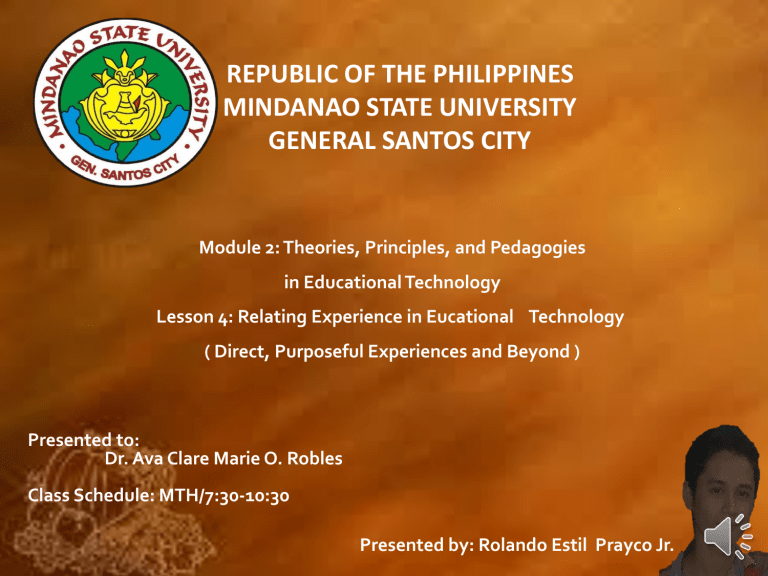
REPUBLIC OF THE PHILIPPINES
MINDANAO STATE UNIVERSITY
GENERAL SANTOS CITY
Module 2: Theories, Principles, and Pedagogies in Educational Technology
Lesson 4: Relating Experience in Eucational Technology
( Direct, Purposeful Experiences and Beyond )
Presented to:
Dr. Ava Clare Marie O. Robles
Class Schedule: MTH/7:30-10:30
Presented by: Rolando Estil Prayco Jr.
Module 2: Theories, Principles, and
Pedagogies in Educational Technology
Lesson 4: Relating Experience in Educational
“From the rich experiences that our senses bring, we construct the ideas, the concepts, the generalizations that give meaning and order to our lives.”
– Edgar Dale
(Corpuz, Lucido 2012)
Definition of Terms
Discuss some testimonies resulted to learning experiences .
Discuss some testimonies resulted to learning experiences.
Discuss and understand the given concepts and have the summary/conclusion .
DEFINITION OF TERMS
Direct, Purposeful Experiences
These are our concrete and firsthand experiences that make up the foundation of our learning.
Indirect Experiences
Are experiences of other people that we observe, read or hear about.
(Corpuz, Lucido 2012 )
Dale’s Cone of Experience
Is a visual model, a pictorial device that presents bands of experience arranged according to degree of abstraction and not to degree of difficulty.
Testimonies:
“The meanings of negative discrimination index and positive discrimination index became crystal clear to me only when we did an item analysis of our test items . ”
– Grade VI teacher
“My husband and children used to do computer job for me which made me totally dependent on them. The problem was they were not always around to help me with my reports, lecture notes, etc. To redeem myself from my helplessness, I forced myself to learn, first of all encoding, then sending e-mail and surfing the internet.
What encouraged me was my five-year old granddaughter could do what I was not capable of doing. Now I feel liberated. I can encode and print my lectures, send emails, surf the Internet, and do powerpoint lecture presentation, even when no one is around to help only
after I had do these things myself. ”
– Graduate School Professor
My boss assigned me to put the transparencies on the plate of the overhead projector while he delivered his lecture on stage. It turned out that the first transparency was not positioned upright for the audience. I repositioned the transparency but it was still inverted.
I felt nervous and the woman in the audience who was seated nearby came to my rescue.
I have never forgotten that experience but having been assigned the task repeatedly, I can say I am now expert at the OHP.
Secretary to the Dean
“It was only
When i came to manila zoo, that i learned that a giraffe is that tall and an elephant is that big.”.
Grade 4 pupil
DISCUSSION:
Whatever skills or concepts we have did not come out of the
blue. We spent hours doing the activity by ourselves in order to aquire the skill. The same thing is true with the previous narrators . They learned the skills by doing. The Graduate School professor had to do the computer task herself to learn the skill. The Grade IV pupil got a crystal clear concept of the size of the elephant and height of the giraffe after seeing with her eyes the real elephant and giraffe.
These are the rich experiences that our senses bring from which we construct the ideas, the concepts, the generalizations that give meaning and order to our lives. (Dale,
1969). They are sensory experiences. (Corpuz, Lucido 2012)
They are not our own self – experiences but still experiences in the sense that we see, read and hear about them. They are not firsthand but rather vicarious or indirect experiences.
Why are these direct experiences described to be purposeful?
Purposeful because the experiences are not purely mechanical.
They are experiences that are internalized in the sense that these experiences involve the asking of questions that have significance in the life of the person undergoing the direct experience. They are also described as purposeful because these experiences are undergone in relation to a purpose, i.e. learning.
“Direct, Purposeful Experiences and Beyond”
Implies that these direct experiences must not be the period or the dead end. We must be brought to a higher plane. (Corpuz, Lucido 2012)
How should the Cone be interpreted?
The figure shows what students will be able to do at each level of the Cone (the learning outcomes they will be able to achieve) relative to the type of activity they are doing (reading, hearing, viewing images, etc.). The numerical figures on the left side of the image, what people will generally remember, indicate that practical, hands-on experience in a reallife context will allow students to remember best what they do.
(http://www2.education.ualberta.ca/staff/olenka.Bilash/best%20of%20b ilash/dalescone.html)
Again, it is important to remember that this doesn’t mean reading and listening are not valuable learning experiences, simply that “doing the real thing” can lead to the retention of the largest amount of information. This is in part because those experiences near the bottom of the
Cone, closer to and including real-world experiences, make use of more of our senses; it is believed that the more senses that are used, the greater our ability to learn from and remember an event or experience .
(http://www2.education.ualberta.ca/staff/olenka.Bilash/best%20of%20bilash/d alescone.html)
The Grade IV pupil’s zoo experience of the elephant and giraffe enables him to understand clearly and visualize correctly an elephant and a giraffe upon reading and hearing the words “elephant” and “giraffe”.
IMPLICATION OF DIRECT EXPERIENCES TO THE
TEACHING-LEARNING PROCESS
1. It gives our students opportunities to learn by doing.
2. It make use of real things as instructional materials for as long as we can.
3. It helps students develop the five senses to the full to heighten their sensitivity to the world.
4. It guides students to draw meaning from their firsthand experiences and elevate their level of thinking.
APPROXIMATION OF HOW MUCH PERSONS LEARN
THROUGH THE FIVE SENSES
John Dewey (1916) has made this fundamental point instinctly:
An ounce of experience is better than a ton of theory because it is only in experience that any theory has vital and verifiable significance. An experience, a very humble experience, is capable of generating and carrying any amount of theory (or intellectual content), but a theory apart from an experience cannot be definitely grasped as a theory.
It tends to become a mere verbal formula, a set of catchwords used to render thinking, or genuine theorizing, unnecessary and impossible.
Direct experiences are firsthand experiences that serve as the foundation of learning. The opposite of experiences are indirect experiences or vicarious experiences.
Direct experiences lead us to concept formation and abstraction. We should not end our lessons knowing only the concrete. We go beyond the concrete by reaching the level of abstract concepts.
References: http://www2.education.ualberta.ca/staff/olenka.Bilash/best%20of%20bilash/dalesc one.html
Corpuz, Lucido (2012) Educational Technology 1. Quezon City, Metro Manila: Lorimar
Publishing, Inc.
THANK YOU AND GOD
Related documents.
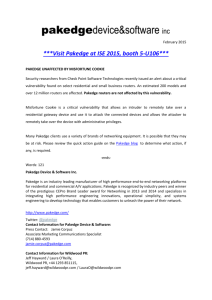
Add this document to collection(s)
You can add this document to your study collection(s)
Add this document to saved
You can add this document to your saved list
Suggest us how to improve StudyLib
(For complaints, use another form )
Input it if you want to receive answer
Direct And Purposeful Experiences
what is direct purposeful experience
1. what is direct purposeful experience
Direct, purposeful experiences are first hand, sensory experiences that serves as the foundation of our learning. It is done in relation to a certain learning objective. Implies that these direct experiences must not be the period or the end.
Explanation:
2. Whyarethese directexperiences describedto be purposeFul?
WHY ARE THESE DIRECT EXPERIENCES DESCRIBED TO BE PURPOSEFUL? They are experiences that are internalized in the sense that these experiences involve the asking of questions that have significance in the life of the person undergoing the direct experience. It is done in relation to a certain learning objective.
3. why are thse direct experiences described to be purposeful?
4. directions: set the purpose of each topic then provide 5 open-endedquestions. topics:1. the experiences of the covid-19 survivors2. the victims of cyberbullying3. the everyday struggles of part-time workers.
1.Did you have an experience in Covid-19?
2.How do you feel that you are belong to the cyber bullying ?
3.Struggling everyday in a part-time works?
#Hope it helps
5. Directions: Study the visual text and answer the questions that follow.QUESTIONSANSWERS1. What do I see?(What do you observe? What else?)2. What does it remind me of?(Another image? A personalexperience?)3. What's the artist purpose?(To Analyze, Persuade, Document,Entertain?)4. So what?(Why does it matter? What is thesignificance?)
1.people are following the covid 19 protocols,wearing face mask,pnp checkpoint in every barangay/province
and observing social distancing.
2.going outside the house and travelling in the city
3.to inform to do the covid 19 protocols and follow the rules
4.it does matter because it can protect us from covid 19 virus
6. Activity 2:Direction: Answer the following questions. Write your answer on the space provided.1. A collaborative form of fine art that uses live performers topresent the experience of a real or imagined event before a live audience in a specificplace.2. A community event celebrating unique aspects of thatcommunity and its traditions, often serving to meet specific religious purposes.
7. directions: this pandemic has brought us to experience the new normal education. if you are to present an idea|activities or programs that may help students learn during this time, present using the generic concept paper permit. tilte of the project:____________________ i. project description ii. purpose statement iii. procedures|steps in executing the project iv. anticipated budget v .contact information.
Title of the project: Digital Life Long Learners 3.0
I. Project Description
-Digital lifelong learners 3.0 is a program designed to assist kids in learning more through the use of gadget apps and websites. They'll learn how to operate it here. Because students are now studying electronically, it is critical to learn. It will also considerably assist them in overcoming the challenges they will face in the event of a pandemic.
II. PURPOSE STATEMENT
Many people are using devices to take online lessons or communicate throughout the pandemic. Using the app and online, this program assists them in improving their knowledge.
III.Procedures|Steps in executing the project
1.create a post online to inform the audience
2.Invite & Forward the webinar Link
3.Ask the students if they have a question
4.create a feedback link to know the students suggestions
IV . Anticipated budget
V. Contact information
Contact us on f a c e b o o k
Email : [email protected]
#0991-111-2222
Note: if you is from tala senior high school Don't copy my answer ! thank s
# C a r r y O n L e a r n i n g

8. Direction write a paragraph (minimum of 10 sentence) about your experience in answering your self learning modules use different kinds of sentences according to purpose
Hope this helps you
mark me as brainlist
9. Directions: Reflect on the importance of kinds of sentences according to purpose in your daily life. Share an experience that shows the “KSAP”.
There are different kinds of sentences. Each helps us to convey the meaning. It is also helping to make the communication easier and to be understood by the sender and the receiver.
There are four types of sentences, classified by their purpose:
#BRAINLYFAST
10. ENGLISH Directions: Write a paragraph about your experiences in answering your Self-Learning Modules. Use different kinds of sentences according to purpose..PLS need kona ngayon..
my experience of answering my self learning module is hard to handle but it is good to me because even there's a Covid 19 is I'm still studying and i have a chance to archiving my dreams to came true
11. Directions: Read each item carefully. Choose the1. If your perform an experiment, Which of the followiA. answerable only by yes or noB. clear and specificC. It does not require an experiment.D. It does not require an investigation.2. Student X performs science activity according toA. Experiment B. Ask questionsC3. It refers to the variable that is purposely change.A. Constant variable
A. Thats my answer follow
12. Part 2. Directions: On the table below, draft your proposed topics for a research paper. The artcolumn is for the topic, second for the purpose, third for the type of qualitative research to be usedfourth as what approach of research you will use, and the fifth column your choice of datacollection Give three topicsTopicPurposeType ofQualitativeResearchResearchApproachData CollectionChoiceSample:Post TraumaticExperiences ofthe COVID-19SurvivorsPhenomenologicalTriangulationmixedTo determine theexperiences ofthose survivors inthe COVID-19phenomenaor WrittendescriptionInterview12.pahelp nmn guys.
Brainstorm concepts. Once you think of a broad topic that interests you, try to brainstorm all of the words or concepts you can that might be related to that topic (and write them down!). For example, if your topic is "polar bears," you might think of the following words and topics in association: ice, cubs, pollution, hunting, diet, climate change, and environmental icon.
•Develop a research question. Once you have come up with a broad topic and done some background research, you may want to develop a research question, or a question you're going to answer in your paper by doing more, in-depth research.
•What's your general approach to the topic? Think about some general approaches that may help you further develop your topic: use a historical angle by focusing on a particular time period; a geographical angle, focusing on a particular part of the world; or a sociological angle, focusing on a particular group of people.
Start doing some exploratory, in-depth research. •As you do more in-depth research, like looking for scholarly articles, books, and other sources to include in your paper, you can and probably will modify or refine your topic based on what you find.
•Research is a dynamic process. Don't be afraid to discover new things and modify or refine your topic.
13. where should these direct,purposeful experiences leadus in the teaching and learning process?explain.
if they teach then you listen so that you will known all there topics
14. DIRECTION: Identify the term described in each statement. Write your answer on the space provided. (2pts.each)1.It includes drawing of a compass or an arrow indicating direction.2.It is the most helpful references and study aids because they can be used for many different purposes.3.A long narrative poem giving an account of the life. deeds and exploits of a central hero.4.It conveys life lessons, advice, or warnings based an ordinary everyday experience.5.It varies according to the occasion for which they are sung.
1. If will compass each side from the arrow drew be direction.
2. It is physical working references and tuition of different in our particular.
3. Favorite hero narrative poem of our world epic to be explorer.
4. Ensure worried advice, If is warning based on daily experience.
5. Favorite according sung to be occasion.
15. Directions: Match the items in column A to the descriptions in column B. Column A Column B 1. Personal narrative A. The purpose in telling the story is to express a 2. Reflective essay point or B. It is a combination of factual reporting with observation. 3. Literary journalism C. It is an essay that describes an actual experience 4. Travelogue narrative techniques D. It recounts an author's specific excursion and stylistic strategies. experience
1. Personal Narraritive
- C. It is an essay that describes an actual experience
2. Reflective Essay
- A purpose in telling the story is to express
3. Literary Journalism
- B. It is a combination of factual reporting with an observation
4. Travelogue narrative Techniques
- D. It recounts an author's specific excursion and stylistic strategies. experience
16. Directions: Study the visual text and answer the questions that follow.QUESTIONSANSWERS1. What do I see?(What do you observe? What else?)2. What does it remind me of?(Another image? A personalexperience?)3. What's the artist purpose?(To Analyze, Persuade, Document,Entertain?)4. So what?(Why does it matter? What is thesignificance?)
may i know where is the visual text?
where is your visual text?
we can't answer that if we see nothing
17. Let's Analyze Let's analyze the following concepts to fully analyze assertions. Common Types of Assertions 1. Fact This is a statement that can be proven objectively by direct experience, testimonies of witnesses, verified observations, or the results of research. Example: The sampaguita's roots are used for medicinal purposes, such as an anesthetic and a sedative. a
I don't unnderstand.
Where's the picture?
18. I: TRUE or FALSE. Write the word TRUE if the statement is correct, otherwise write the word FALSE. 1. Research paves way to new ideas and discovery of things that will benefit man. 2. Qualitative research collects and analyzes numerical data to understand concepts, opinions, or experiences. 3. One of the main purposes of research is to contribute to the developing knowledge in a particular field or study. 4. Research is not based on direct experience or observation by the researcher. 5. Qualitative research is an important alternative to quantitative research in psychologyanswer please
1. True 2. False 3. True 4. False 5. False
19. Directions: Write a paragraph about your experiences in answering your Self-Learning Modules. Use different kinds of sentences according to purpose. Write it on a separate sheet of paper.
Answering self-learning modules is kinda hard for me. I didn’t expect that I’m gonna be experiencing this type of learning. COVID-19 really made my schooling journey so hard to the point I’m having a mental breakdown because of the lessons. I became too lazy to answer each worksheet because of doubt that the answers I’m gonna write were all wrong. However, with the help of my classmates and teachers, they made it so easy to answer and understand. This made me realize that it’s really fun and helped me to manage my time.
20. Direction: Identify which reading resources can be used for the following purposes of informationaltext.A. experimentB. diariesC. advertisement D. short storiesE. letters answering query1. to describe -2. to entertain -3. to explain -4. to instruct -5. to persuade -
1 a 2 d 3 b 4 c 5 e
i hope it help
21. Explain the different activities under direct purposeful experience
"From the rich experiences that our senses bring, we construct the ideas, the concepts, the generalizations that give meaning and order to our lives." Direct experiences are firsthand experiences that serve as the foundation of learning.
22. Reflection Guide: Directions: Briefly answer the question below. The use of Communicative Strategies is the hallmark of communicative competence. Being able to use such strategies make certain not only the achievement of the Speech Purpose but also the enrichment of the communication experience for both Speaker and Listener. How would you use such strategies when communicating with other people from other cultures?
Answer:The use of Communicative Strategies is the hallmark of communicative competence. Being able to use such strategies make certain not only the achievement of the Speech Purpose but also the enrichment of the communication experience for both Speaker and Listener. More than making interaction possible, Communicative Strategies when used by the Speaker (and sometimes the Listener) allow for the adjustment of the Message and its Delivery. Of course, such strategies are employed within specific Speech Contexts using a combination of Speech Styles and Speech Acts.
23. examples of the following Direct Purposeful Experience, Contrived Experience, Dramatization, Verbal Symbols and Visual Symbols
Direct Purposeful Experience
-Preparing meals or snacks.
-Making a piece of furniture.
-Performing a laboratory experiment.
-Delivering a speech.
-Taking a trip.
Contrived Experience
-games and simulation
Dramatization
-The Man of Destiny (written in 1895, played at Croydon in 1897 by Mr Murray Carson)
-Napoleonic drama, which was revived at New York by Arnold Daly in 1904;
-You Never Can Tell (written in 1896, produced at the Strand Theatre in 1900)
-The Devil's Disciple (produced at New York by Richard Mansfield in 1897, and in London in 1899)
-War of American Independence, Caesar and Cleopatra (1898)
Verbal Synonyms
-nuncupative,
-unwritten,
-viva voce,
-word-of-mouth
Visual Symbols
-Drawings and Sketches
24. Explain the implications of direct purposeful experience to the teaching learning process?
25. directions: study the visual text and answer the questions that follow.questions:1. what do i see(what do you observe what else)2. what does it remind me of(another image a personal experience)3. what’s the artist purpose(to analyze, persuade, document, entertain)4. so what(why does it matter what is the significance), 26. why values are important our values inform our thoughts, words, and actions. our values are important because they help us to grow and develop. they help us to create the future we want to experience. every individual and every organization is involved in making hundreds of decisions every day. the decisions we make are a reflection of our values and beliefs, and they are always directed towards a specific purpose. that purpose is the.
Our values inform our thoughts, words, and actions.
Our values are important because they help us to grow and develop. They help us to create the future we want to experience.
Every individual and every organization is involved in making hundreds of decisions every day. The decisions we make are a reflection of our values and beliefs, and they are always directed towards a specific purpose.
please tap the heart
27. DIRECTION: Answer what is asked in the given questions. 1. What can you say about the picture? 2. What emotion being portrayed in this picture? 3. Share your personal experience in the given purposes of anecdotes above. Choose only one.
Sorry I can't answer your question.
Because your questions referring to a picture but there's no picture at all.
28. Directions: Reflect on the importance of kinds of sentences according to purpose in your daily life. Share an experi
There are four different types of sentences, with each type serving a different purpose. The purposes can vary from making statements, asking questions or even making commands. Knowing the different types of sentences can help you become a more effective writer and learn to streamline your sentence construction.
Hope it helps Pa brainly narin po
29. Pa help po! which are the correct answers? 1. contrived experience, demonstrations, and field trip are examples of _____ A. Iconic b. enactive c. symbolic d.abstract 2.performing experiment is an example of materials ___a. Real world experience b. direct purposeful experience c. contrived experience d. dramatized experience 4.As applied in the cone of experience, which will work best for kindergarten children? a. videos b. books c. audio recording d. Real life experience 4.which statement is not correct about the cone of experience? a. The experiences in each stages can be mixed and interrelated. b. there should be a progression of experiences from the bottom to top. c. There must be a balance between concrete and abstract experiences in order to cater and address the needs of the learner. d. the more senses are involved; the better learning will take place.
a. Real world experience
d. Real life experience
d. the more senses are involved ; the better learning will take place.
Experience is something that has been experienced, lived or felt which is then stored in memory.
In the world of work, the term experience is also used to refer to knowledge and skills about something that is gained through involvement or related to it over a certain period.
In general, experience refers to knowing how or procedural knowledge, rather than propositional knowledge. Knowledge based on experience is also known as empirical knowledge or posteriori knowledge. A person with a fair amount of experience in a particular field is called an expert.
Life experiences include the following:
When your friend shares his personal experience, you should listen carefully. Then, you can respond with the experience. You can also rate and respond to your friends' stories. Share your feedback with your friends. These responses will be taken into consideration for self-improvement.
Learn more about the experience at https://brainly.ph/question/21108460
30. What is ItGuide QuestionsDirections: Answer the following questions briefly innotebook.your science1. Describe what happens to solid materials when they were bent,hammered, pressed and cut.2. Was there a new material formed when the solid material was bent,hammered, pressed and cut?What characteristics of solid were evident in these experiments?For teaching purposes onlyNot for sale
1. When solid materials were bent, hammered,pressed and cut there's a new material formed. Which change in size and shape compare to the original one.
2.Yes, The characteristics of solid were evident in the experiment is its mass, volume and shape.
Video Terkait

- school Campus Bookshelves
- menu_book Bookshelves
- perm_media Learning Objects
- login Login
- how_to_reg Request Instructor Account
- hub Instructor Commons
Margin Size
- Download Page (PDF)
- Download Full Book (PDF)
- Periodic Table
- Physics Constants
- Scientific Calculator
- Reference & Cite
- Tools expand_more
- Readability
selected template will load here
This action is not available.

6.4: Persuasive Essays
- Last updated
- Save as PDF
- Page ID 107782

- Kathryn Crowther et al.
- Georgia Perimeter College via GALILEO Open Learning Materials
\( \newcommand{\vecs}[1]{\overset { \scriptstyle \rightharpoonup} {\mathbf{#1}} } \)
\( \newcommand{\vecd}[1]{\overset{-\!-\!\rightharpoonup}{\vphantom{a}\smash {#1}}} \)
\( \newcommand{\id}{\mathrm{id}}\) \( \newcommand{\Span}{\mathrm{span}}\)
( \newcommand{\kernel}{\mathrm{null}\,}\) \( \newcommand{\range}{\mathrm{range}\,}\)
\( \newcommand{\RealPart}{\mathrm{Re}}\) \( \newcommand{\ImaginaryPart}{\mathrm{Im}}\)
\( \newcommand{\Argument}{\mathrm{Arg}}\) \( \newcommand{\norm}[1]{\| #1 \|}\)
\( \newcommand{\inner}[2]{\langle #1, #2 \rangle}\)
\( \newcommand{\Span}{\mathrm{span}}\)
\( \newcommand{\id}{\mathrm{id}}\)
\( \newcommand{\kernel}{\mathrm{null}\,}\)
\( \newcommand{\range}{\mathrm{range}\,}\)
\( \newcommand{\RealPart}{\mathrm{Re}}\)
\( \newcommand{\ImaginaryPart}{\mathrm{Im}}\)
\( \newcommand{\Argument}{\mathrm{Arg}}\)
\( \newcommand{\norm}[1]{\| #1 \|}\)
\( \newcommand{\Span}{\mathrm{span}}\) \( \newcommand{\AA}{\unicode[.8,0]{x212B}}\)
\( \newcommand{\vectorA}[1]{\vec{#1}} % arrow\)
\( \newcommand{\vectorAt}[1]{\vec{\text{#1}}} % arrow\)
\( \newcommand{\vectorB}[1]{\overset { \scriptstyle \rightharpoonup} {\mathbf{#1}} } \)
\( \newcommand{\vectorC}[1]{\textbf{#1}} \)
\( \newcommand{\vectorD}[1]{\overrightarrow{#1}} \)
\( \newcommand{\vectorDt}[1]{\overrightarrow{\text{#1}}} \)
\( \newcommand{\vectE}[1]{\overset{-\!-\!\rightharpoonup}{\vphantom{a}\smash{\mathbf {#1}}}} \)
Writing a Persuasive Essay
Choose a topic that you feel passionate about. If your instructor requires you to write about a specific topic, approach the subject from an angle that interests you. Begin your essay with an engaging introduction. Your thesis should typically appear somewhere in your introduction. Be sure to have a clear thesis that states your position and previews the main points your essay will address.
Start by acknowledging and explaining points of view that may conflict with your own to build credibility and trust with your audience. Also state the limits of your argument. This too helps you sound more reasonable and honest to those who may naturally be inclined to disagree with your view. By respectfully acknowledging opposing arguments and conceding limitations to your own view, you set a measured and responsible tone for the essay.
Make your appeals in support of your thesis by using sound, credible evidence. Use a balance of facts and opinions from a wide range of sources, such as scientific studies, expert testimony, statistics, and personal anecdotes. Each piece of evidence should be fully explained and clearly stated. Make sure that your style and tone are appropriate for your subject and audience. Tailor your language and word choice to these two factors, while still being true to your own voice.
Finally, write a conclusion that effectively summarizes the main argument and reinforces your thesis. See the sample persuasive essay at the end of this section, “The Value of Technical High Schools in Georgia’s Business Marketplace,” by student Elizabeth Lamoureux. Please note that this essay uses the MLA style of documentation, for which you can find guidelines at Purdue University’s Online Writing Lab (OWL) website: http://owl.english.purdue.edu .
Sample Persuasive Essay
In this student paper, the student makes a persuasive case for the value of technical high schools in Georgia. As you read, pay attention to the different persuasive devices the writer uses to convince us of her position. Also note how the outline gives a structure to the paper that helps lead the reader step-by-step through the components of the argument.
Student Outline
Elizabeth Lamoureux
English 1101 Honors
April 25, 2013
Thesis : Technical high schools should be established in every county in Georgia because they can provide the technical training that companies need, can get young people into the workforce earlier, and can reduce the number of drop outs.
- Education can focus on these specific technical fields.
- Education can work with business to fill these positions.
- Apprenticeship programs can be a vital part of a student’s education.
- Apprenticeship programs are integral to Germany’s educational program, providing a realistic model for technical high schools in Georgia.
- Students train during their high school years for their chosen profession.
- Students begin to work in a profession or trade where there is a need.
- Students will become independent and self-supporting at the age of eighteen when many of their peers are still dependent upon their parents.
- Students can make more money over the course of their lifetimes.
- Students are more motivated to take courses in which they have an interest.
- Students will find both core and specialized classes more interesting and valuable when they can see the practical application of the subjects.
- Students would be able to earn a living wage while still taking classes that would eventually lead to full-time employment.
- Students would learn financial skills through experience with money management.
Student Essay
The Value of Technical High Schools in Georgia’s Business Marketplace
Businesses need specialized workers; young people need jobs. It seems like this would be an easy problem to solve. However, business and education are not communicating with each other. To add to this dilemma, emphasis is still put on a college education for everyone. Samuel Halperin, study director of the Commission on Work, Family, and Citizenship for the W. T. Grant Foundation, co-authored two reports: “The Forgotten Half: Non-College Youth in America” and “The Forgotten Half: Pathways to Success for America’s Youth and Young Families.” Halperin states: “While the attention of the nation was focused on kids going to college . . . the truth is that 70 percent of our adults never earn a college degree” (qtd. in Rogers). According to an article in Issues in Science and Technology, the Bureau of Labor Statistics projects that there will be more need for skills obtained through “community colleges, occupational training, and work experience” (Lerman). As Anne C. Lewis points out, although the poor job situation is recognized as detrimental to American youth, President Bush tried to get rid of career and technical education (CTE) and “promote strictly academic programs.” Luckily, Congress did not support it (Lewis 5). The figure for U.S. teen joblessness in October 2009 was 27.6 percent, the highest since World War II (Karaim). According to Thomas E. Persing, Americans are “disregarding the 50 percent who enter college and fail to graduate. . . .” Since everyone does not want or need to go to college, young people need an alternative choice, namely, technical high schools. Technical high schools should be established in every county in Georgia because they can provide the technical training that companies need, can get young people into the work force earlier, and can reduce the number of drop outs.
Technical high schools provide students with the technical training that companies need. By getting input from businesses on exactly what their specialized needs are, school systems could adapt their curricula to accommodate the needs of businesses. According to an article in Issues in Science and Technology, “employers report difficulty in recruiting workers with adequate skills.” The article goes on to say that “the shortage of available skills is affecting their ability to serve customers, and 84% of the firms say that the K-12 school system is not doing a good job preparing students for the workplace” (Lerman). Education can work with businesses to provide them with the workforce they need, and students can learn the skills they need through apprenticeship programs.
Business can be further involved by providing these apprenticeship programs, which can be a vital part of a student’s education. Currently, Robert Reich, economist and former Secretary of Labor, and Richard Riley, Secretary of Education, have spoken up for apprenticeship programs (Persing). In these programs, not only do students learn job-specific skills, but they also learn other skills for success in the work place, such as “communication, responsibility, teamwork, allocating resources, problem-solving, and finding information” (Lerman). Businesses complain that the current educational system is failing in this regard and that students enter the workforce without these skills.
The United States could learn from other countries. Apprenticeship programs are integral to Germany’s educational program, for example. Because such large numbers of students in a wide array of fields take advantage of these programs, the stigma of not attending college is reduced. Timothy Taylor, the Conversable Economist, explains that most German students complete this program and still have the option to pursue a postsecondary degree. Many occupations are represented in this program, including engineering, nursing, and teaching. Apprenticeship programs can last from one to six years and provide students with a wage for learning. This allows both business and student to compete in the market place. According to Julie Rawe, “under Germany’s earn-while-you-learn system, companies are paying 1.6 million young adults to train for about 350 types of jobs. . . .”
A second important reason technical high schools should be promoted in Georgia is that they prepare students to enter the work force earlier. Students not interested in college enter the work force upon high school graduation or sooner if they have participated in an apprenticeship or other cooperative program with a business. Students train during their high school years for their chosen profession and often work for the company where they trained. This ensures that students begin to work in a profession or trade where there is a need.
Another positive factor is that jobs allow students to earn a living upon graduation or before. Even though students are considered adults at eighteen, many cannot support themselves. The jobs available to young people are primarily minimum wage jobs which do not provide them with enough resources to live independently. One recent study indicates that the income gap is widening for young people, and “In March 1997, more than one-fourth of out-ofschool young adults who were working full-time were earning less than the poverty line income standard of just over $16,000 annually for a family of four” (“The Forgotten Half Revisited”). Conversely, by entering the work force earlier with the skills businesses need, young people make more money over their lifetimes. Robert I. Lerman considers the advantages:
Studies generally find that education programs with close links to the world of work improve earnings. The earnings gains are especially solid for students unlikely to attend or complete college. Cooperative education, school enterprises, and internship or apprenticeship increased employment and lowered the share of young men who are idle after high school.
Young people can obviously profit from entering the work force earlier.
One of the major benefits of promoting technical high schools in Georgia is that they reduce the number of dropouts. According to an article in the Atlanta Journal-Constitution, the figure for dropouts for the Atlanta metro area is about thirty-four percent (McCaffrey and Badertscher A16). The statistic for Germany’s dropout rate is less than nine percent (Rawe). As Rawe maintains, students stay in school because they cannot get the job if they do not have the diploma. Beyond the strong incentive of a job, students are more motivated to take courses in which they have an interest. In addition to the specialized career classes, students are still required to take core classes required by traditional high schools. However, practical application of these subjects makes them more interesting and more valuable to the students.
Another reason students drop out is to support their families. By participating in a program in which they are paid a wage and then entering that job full time, they no longer need to drop out for this reason. It is necessary for many students to contribute financially to the family: by getting a job earlier, they can do this. Joining the work force early also provides students with financial skills gained through experience with money management.
The belief of most Americans that everyone needs to have a college education is outdated. The United States needs skilled employees at all levels, from the highly technical to the practical day to day services society needs to sustain its current standard of living. Germany is doing this through its apprenticeship programs which have proven to be economically successful for both businesses and workers. If the State of Georgia put technical high schools in every county, businesses would get employees with the skills they need; young people would get into good paying jobs earlier, and schools would have fewer dropouts.
Works Cited
“The Forgotten Half Revisited: American Youth and Young Families, 1988-2008.” American Youth Policy Forum . N.p., n.d. Web. 21 Apr. 2012.
Karaim, Reed. “Youth Unemployment.” CQ Global Researcher 6 Mar. 2012: 105-28. Web. 21 Apr. 2012.
Lerman, Robert I. “Building a Wider Skills Net for Workers: A Range of Skills Beyond Conventional Schooling Are Critical to Success in the Job Market, and New Educational Approaches Should Reflect These Noncognitive Skills and Occupational Qualifications.” Issues in Science and Technology 24.4 (2008): 65+. Gale Opposing Viewpoints in Context . Web. 21 Apr. 2012.
Lewis, Anne C. “Support for CTE.” Tech Directions 65.3 (2005): 5-6. Academic Search Complete. Web. 11 Apr. 2012.
McCaffrey, Shannon, and Nancy Badertscher. “Painful Truth in Grad Rates.” Atlanta Journal-Constitution 15 Apr. 2012: A1+. Print.
Persing, Thomas E. “The Role of Apprenticeship Programs.” On Common Ground . Yale-New Haven Teachers Institute, Fall 1994. Web. 16 Apr. 2012.
Rawe, Julie. “How Germany Keeps Kids From Dropping Out.” Time Magazine U.S. Time Magazine, 11 Apr. 2006. Web. 16 Apr. 2012.
Rogers, Betsy. “Remembering the ‘Forgotten Half.’” Washington University in St. Louis Magazine Spring 2005. Web. 21 Apr. 2012.
Taylor, Timothy. “Apprenticeships for the U.S. Economy.” Conversableeconomist.blogspot.com. Conversable Economist , 18 Oct. 2011. Web. 16 Apr. 2012.
This content cannot be displayed without JavaScript. Please enable JavaScript and reload the page.
- Teaching & Learning
- Unit design
Purposeful Learning Activities: examples of best practice
Learning activities are essential to student understanding and progress towards learning outcomes. Purposeful learning activities ensure that students are engaged in their learning, through the use of active learning approaches in class, online, and when studying self-access materials. Active learning involves students actively engaging with the material and seeking out new knowledge, rather than receiving information passively.
Purposeful learning activities guide students and enable them to process, integrate and understand unit materials. Watching videos, listening to podcasts, and reading articles expose students to content and information: but do not provide students with opportunities to demonstrate their understanding or application. Ensuring unit materials include suitable learning activities is essential for student learning and engagement.
When selecting an activity, it's important to ensure it relates directly to the content covered and is relevant to the learning outcomes. Purposeful activities clearly outline student expectations and provide timely and relevant feedback that supports student learning. Learning activities can also incorporate elements that build a community, utilize online tools for interaction, promote the exchange of ideas, and create a student-centred environment (Poll and Weller 2014).
The following examples in this article align with the Southern Cross Model and incorporate these critical elements in a range of ways.
More examples
More example learning activities organised around the Communities of Inquiry (Col) model can be viewed on the Introducing the Southern Cross Model (ISCM) site .
Activities that Explore Information
The following activities allow students to explore new ideas and information and build their understanding. Students can add to their existing knowledge and skills, clarify their understanding of material, and gain new perspectives. Explore activities can include, interactive videos and tours, discussions, debates, or reading activities.
H5P Timeline
This activity from MDIA2004 Making Radio and Podcasts helps students to contextualise the production techniques of today within the technical and social history of radio as a mass communication tool. Learners are asked to explore the history of both radio and the evolution of the burgeoning podcast industry, with an emphasis on Australia, and to reflect on what they already know about the history of radio and podcasting.
Once students have completed this activity, they have background context to support reading an article on how podcasting has led to a renaissance for the field of audio documentary and drama.
H5P Virtual tour (360)
This activity demonstrates how an H5P Virtual tour exercise can be used to familiarise students with important contextual elements of a maternity ward. Students explore the different prompts such as text, quizzes, videos and links in which they can check their knowledge and reflect on what they have learned as they proceed.
Activities that promote Group interaction
Group activities allow students opportunities to interact and share their ideas. The ability for students to work cooperatively in a team is a more highly valued employability skill than the ability to work independently. Cooperative learning in groups allows students to become active participants in their learning. Students develop skills such as problem-solving, negotiation, conflict resolution, leadership, critical thinking and time management.
Jigsaw Readings: tutorial activity
This activity from CLST3002 Borderlands: Identity, Culture and Belonging allows learners to build social connections and support each others' learning through by analysing ideas and concepts within readings and sharing their findings.
It is suitable for both face-to-face, blended and online learning. In addition, jigsaw readings activities make readings more engaging, accessible and much quicker for students.
Learners read different paragraphs with questions corresponding to page numbers in each paper. The jigsaw readings come together as a whole article in follow-up tutorials where learners take notes of each other's findings. The self and group aspects of this task make it a richer and more meaningful learning opportunity for students.
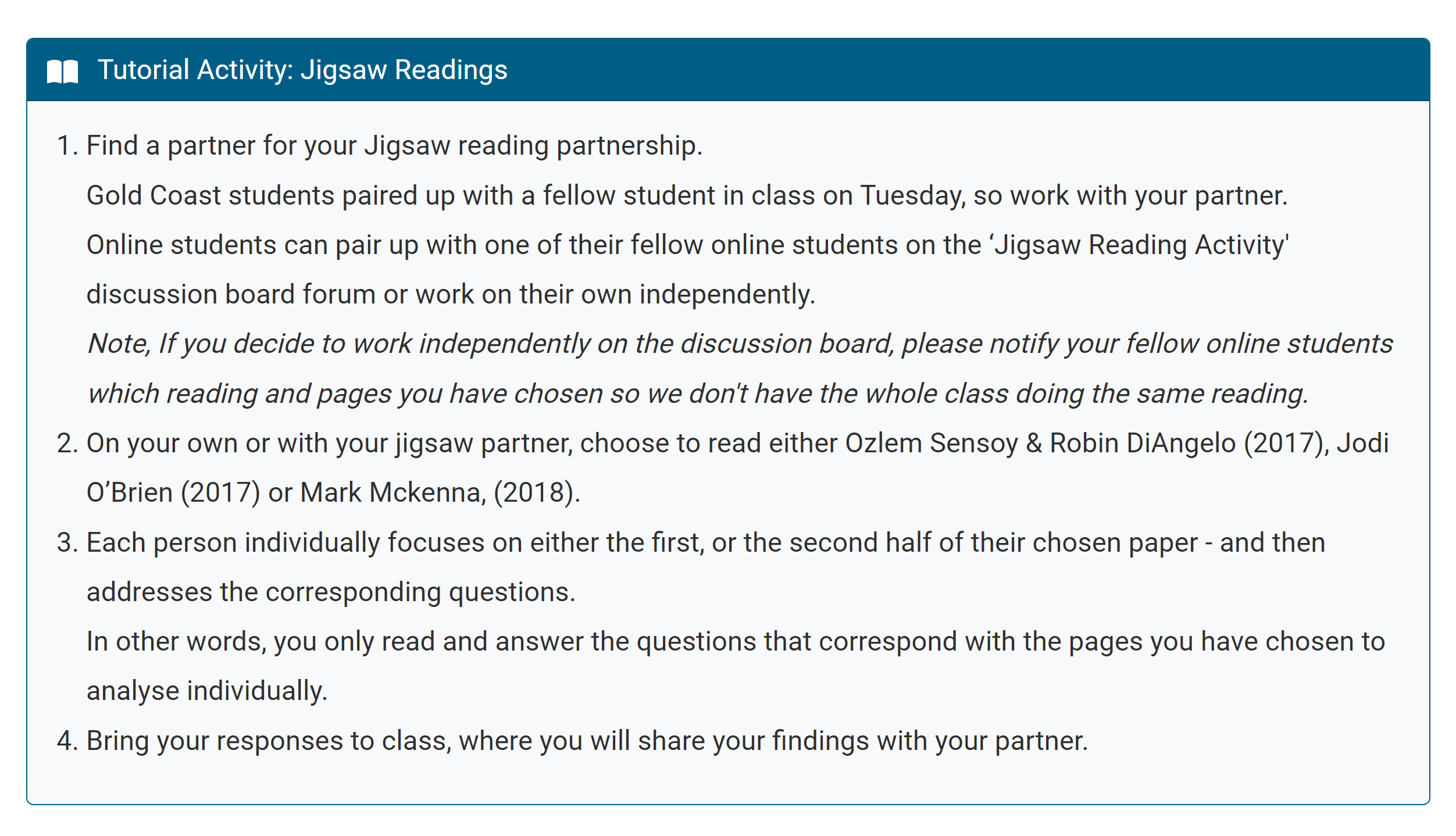
Activities that guide Reflection
Reflective activities provide opportunities for students to deepen thought, improve their learning process, and to master ideas. Reflective students become independent lifelong learners and improve their ability to achieve learning outcomes.
Using reflective activities, students reflect on what they are or will be learning, monitor how they are go ing, and then evaluate and assess how well they achieved their learning goals, what they learned, and what they could do differently. This forms a reflective cycle (Storie, 2021).
- Pre-Reflection is reflection done before the task is started and involves identifying the goal and creating a plan.
- Action-Reflection is initiated during the task to monitor and adjust the progress and strategies.
- Post-Reflection is reflection at the conclusion of the task to evaluate and assess success.
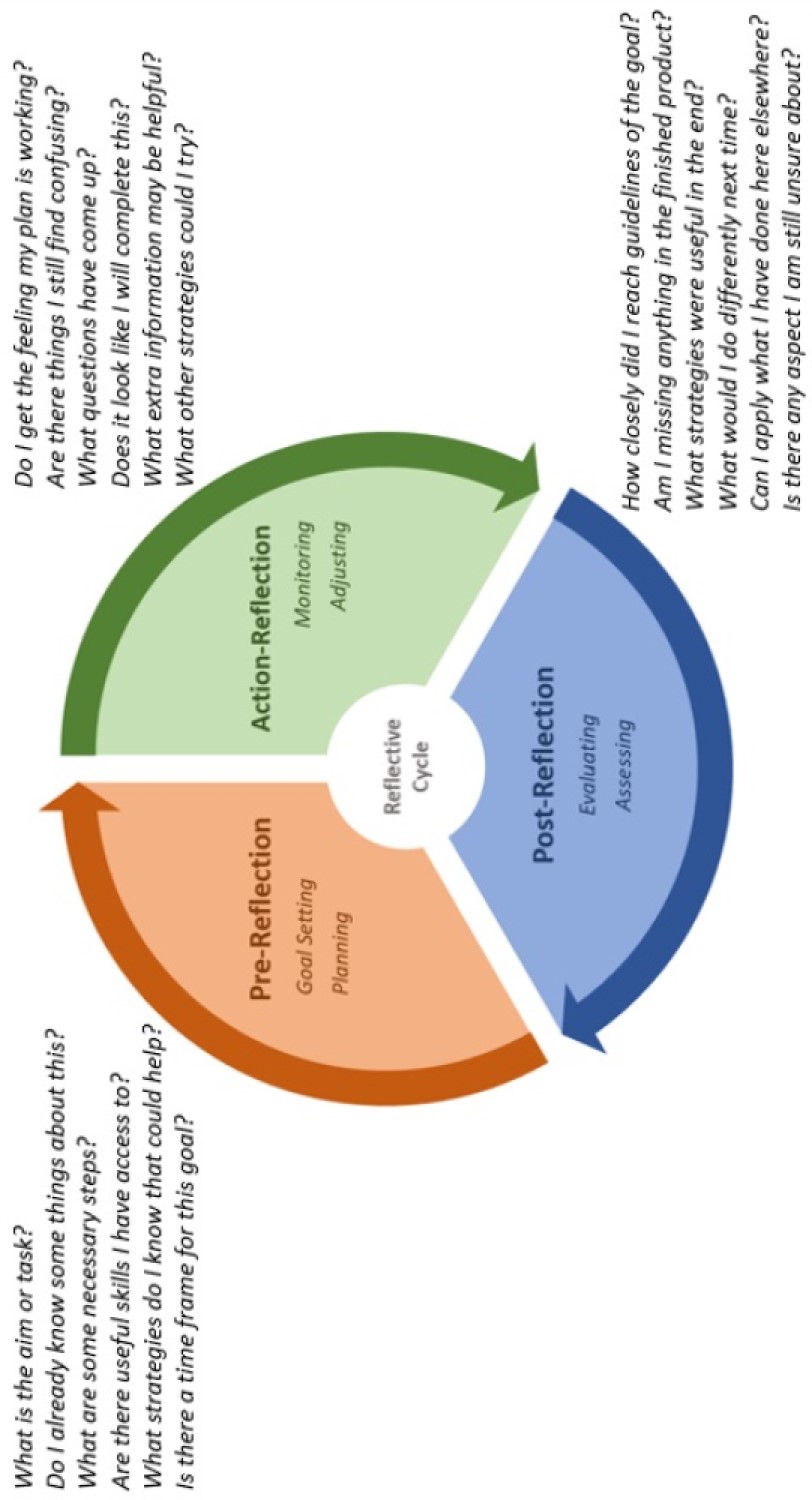
Figure 1: The Reflective Cycle (Storie, 2021)
Consider how you might include student reflection before, during, or after a learning experience.
H5P Interactive book
In this reflective activity, students read an article, identify the theory supporting the author's statement about different stages being non-linear and then apply them to their own professional practice.
H5P Documentation Tool
At the end of each module, students studying HLTH6002 Metabolic Health and Management are directed to reflect on what they have learned. After students complete their responses, they can download and save these for future reference. This activity helps students identify what they have learned from each module and how it applies to them; an essential component of lifelong learning.
Activities that use Case Studies
A case study is an in-depth, intensive study of a particular case or scenario, with the purpose of understanding a broader set of similar situations. Students are able to analyze authentic cases and to apply their knowledge and skills to real-world contexts. For example, a medical student might need to diagnose a patient, or a business student might be required to evaluate an organisation's business strategy.
H5P Course presentation
Students studying INDG1003 The Mental Health of Australian Indigenous Peoples, are presented with case studies that provide a rich context for examining the social, and political issues impacting the psychological wellbeing of Indigenous people .
The following interactive H5P course presentation concerns a case study of Indigenous woman Naomi Williams and uses text, audio and video format. Students are asked to reflect on what they have learned after engaging with the materials.
H5P Interactive video using a motion image animation
This short video was created by the Digital Resources team for LAWS2055 Criminal Process to transform a legal case (R v Rondo) into a short motion graphic animation, which was then further developed into an H5P interactive video.
Before completing this activity, learners read about police investigation powers relating to search and seizure. They then watch the short video and complete the quiz questions throughout it to check their understanding of the learning content. Instant feedback is provided to students once they complete each section. A link to the R V Rondo case allows students to access the full report in text format.
Activities that Revise and Summarise
Summary and revision activities, such as quizzes with immediate feedback, allow students to review the course content and identify gaps in their knowledge and skills and what they need to improve upon to succeed.
H5P Drag and drop
In this revision activity from HBIO1009 Anatomy and Physiology, students study the interaction of hormones. Students watch a short video about neurohormones and the higher centres within the endocrine system, and then complete the following H5P drag-and-drop activity by dragging the correct hypothalamic and anterior pituitary tropic hormones to the correct diagram location. Once students complete the activity and review feedback, they can view a summary of the topic and download a pdf table summarising the endocrine glands and organs.
H5P Branching scenario
This activity is designed to simulate a nurse's experience working in an emergency ward within a hospital. Learners work through revision and problem-solving exercises, triaging and treating patients. Branching scenarios are useful at the end of a topic, module or unit because they allow learners to apply their knowledge and skills in authentic situations.
More Activity Ideas
Learning activities provide opportunities for students to engage with the unit materials and each other online, in self-access modules, and in class tutorials and workshops.
Some activity ideas:
- Pose a question for students to comment on in the discussion board
- Prompt students to respond (respectfully) to each other's questions and comments in the discussion board
- Ask students to contribute to a shared document (such as a Bb wiki or Zoom Whiteboard ) to solve a problem or build a shared understanding of a topic
- Ask students to work in pairs or small groups in an online or class learning activity (Think/Pair/Share is a popular approach)
- Use a polling tool (e.g. Kahoot! or Zoom Poll ) to poll students’ opinions on a topic and show real-time responses.
H5P learning activities
You can learn more about H5P and interactive learning activities in the following guide: H5P: Create interactive resources
More technology tools
You can learn more about the different technology tools for teaching in the following article: Technology integration
K. Poll, J. Widen, and S. Weller (2014). Six Instructional Best Practices for Online Engagement and Retention. Journal of Online Doctoral Education, 1, 1: 56-72, 2014. https://ecommons.luc.edu/english_facpubs/30/ .
Storie B. (2021). Reflecting with Purpose : A Research-Backed, Educator's Guide to Fostering Student Reflection, https://pressbooks.bccampus.ca/reflectingwithpurpose/ .
Home — Essay Samples — Life — Personal Life — Personal Fulfillment: Path to a Meaningful Life
Personal Fulfillment: Path to a Meaningful Life
- Categories: Personal Experience Personal Life
About this sample

Words: 708 |
Published: Sep 12, 2023
Words: 708 | Pages: 2 | 4 min read
Table of contents
The essence of personal fulfillment, the significance of personal fulfillment, factors contributing to personal fulfillment, strategies for attaining personal fulfillment, enhanced well-being:, increased motivation:, improved relationships:, positive impact on society:, self-discovery:, meaningful relationships:, goal setting and achievement:, engagement and flow:, altruism and contribution:, cultivate self-awareness:, nurture relationships:, set and pursue meaningful goals:, embrace challenges and growth:, give back to others:.

Cite this Essay
Let us write you an essay from scratch
- 450+ experts on 30 subjects ready to help
- Custom essay delivered in as few as 3 hours
Get high-quality help

Dr Jacklynne
Verified writer
- Expert in: Life

+ 120 experts online
By clicking “Check Writers’ Offers”, you agree to our terms of service and privacy policy . We’ll occasionally send you promo and account related email
No need to pay just yet!
Related Essays
1 pages / 494 words
1 pages / 508 words
2 pages / 757 words
1 pages / 507 words
Remember! This is just a sample.
You can get your custom paper by one of our expert writers.
121 writers online
Still can’t find what you need?
Browse our vast selection of original essay samples, each expertly formatted and styled
Related Essays on Personal Life
In the context of my autobiography essay, it's essential to understand my background. My name is Tharun, and I was born on December 18, 2004, in Kuala Lumpur, Malaysia. My parents are Suresh and Karolina. Unfortunately, both of [...]
Social science, a broad field encompassing disciplines such as sociology, psychology, economics, anthropology, political science, and more, plays a profound and often underestimated role in shaping our daily lives. While natural [...]
Observing a scene is an art form that allows individuals to delve into the intricate details of everyday life, uncovering the beauty and significance hidden in the ordinary. This essay explores the essence of observing a scene, [...]
I was speechless. All I was able to say was “I am sorry”. I ran out crying and went straight home from there. As I got home I went down on my knees beside my bed and asked God to forgive me for all that I had done. After that [...]
Fake friends experience is a topic of my essay. This issue comes up throughout your entire life. I feel like I started to have my first encounters with these so-called snakes as early as grade school. To give you a little taste [...]
When people think of a famous singer/songwriter, they typically do not a blind person in mind. Which is to be expected since most singer/songwriters are blessed with the ability to see, and there are some that are less [...]
Related Topics
By clicking “Send”, you agree to our Terms of service and Privacy statement . We will occasionally send you account related emails.
Where do you want us to send this sample?
By clicking “Continue”, you agree to our terms of service and privacy policy.
Be careful. This essay is not unique
This essay was donated by a student and is likely to have been used and submitted before
Download this Sample
Free samples may contain mistakes and not unique parts
Sorry, we could not paraphrase this essay. Our professional writers can rewrite it and get you a unique paper.
Please check your inbox.
We can write you a custom essay that will follow your exact instructions and meet the deadlines. Let's fix your grades together!
Get Your Personalized Essay in 3 Hours or Less!
We use cookies to personalyze your web-site experience. By continuing we’ll assume you board with our cookie policy .
- Instructions Followed To The Letter
- Deadlines Met At Every Stage
- Unique And Plagiarism Free
arlyn.madelo
Friday, february 8, 2013, lesson 7- direct,purposeful experiences and beyond.
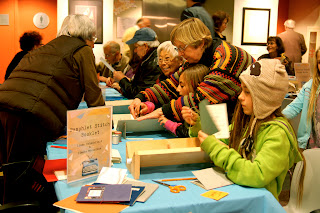
This entails us that whatever kinds of technology,we don't know how to use,how to operate or how does it benefitted to mankind. We couldn't be able to know a certain device if we don't give ourselves a try. If we are always depending on others who is expert for a particular thing,then,we will remain unskilled and novice. But if you give time to yourself practicing and exploring a certain thing.it will eventually develop. Skills in a certain thing will be eventually develop until mastery achieved.
No comments:, post a comment.

Essay on My Purpose in Life
Students are often asked to write an essay on My Purpose in Life in their schools and colleges. And if you’re also looking for the same, we have created 100-word, 250-word, and 500-word essays on the topic.
Let’s take a look…
100 Words Essay on My Purpose in Life
Introduction.
Life is a journey filled with lessons and experiences. My purpose in life is to learn, grow, and contribute to the world.
I believe that learning is a lifelong process. I strive to gain knowledge every day, which helps me to become a better person.
Personal growth is important to me. I aim to improve myself continuously, overcoming challenges and growing stronger.
Contribution
I want to make a positive impact in the world. I aim to help others, and through this, fulfill my purpose in life.
In conclusion, my purpose in life is to learn, grow, and contribute.
250 Words Essay on My Purpose in Life
Life is a journey of self-discovery and purpose. It is a voyage that leads one to the realization of their significance in the grand scheme of existence. My purpose in life, as I perceive it, is to contribute positively to the world, continually learn and grow, and inspire others.
Positive Contribution
In the vast expanse of the universe, our individual existences may seem insignificant. However, I believe that each one of us has the capacity to make a positive impact. My purpose is to contribute to society’s welfare, be it through volunteer work, professional endeavors, or simply spreading kindness and understanding in my daily interactions.
Continuous Learning and Growth
Life is a continuous learning process. Each day presents new opportunities to grow, learn, and evolve. I am committed to lifelong learning, not just in the academic or professional sense, but in personal development. This involves embracing challenges, cultivating resilience, and fostering a growth mindset.
Inspiring Others
Lastly, I aspire to inspire. I believe that one of the most profound ways to make a difference is to inspire others to discover their own purpose and pursue it with passion. This could be through sharing experiences, leading by example, or providing support and encouragement.
In conclusion, my purpose in life is to contribute positively to the world, continually learn and grow, and inspire others. This purpose is not static but evolves as I journey through life, constantly shaped by experiences, insights, and personal growth. It serves as a compass, guiding my decisions and actions, and giving meaning to my existence.
500 Words Essay on My Purpose in Life
Life is a journey of self-discovery and self-fulfillment. It is a quest to find our purpose, the unique role we are meant to play in the grand narrative of existence. My purpose in life, as I see it, is to contribute positively to the world, to inspire others, and to continuously grow and evolve as a person.
Contributing to the World
I believe that each of us has a responsibility to make the world a better place. This does not necessarily mean grand, sweeping changes. Even small actions can have a profound impact. For me, contributing to the world means using my skills and talents to help others. As a college student, I have the opportunity to acquire knowledge and expertise in a particular field. My aim is to use this expertise to solve problems and create solutions that can improve people’s lives. Whether it’s through research, innovation, or direct service, I want to leave a positive mark on the world.
Another aspect of my purpose in life is to inspire others. I believe that we all have the power to influence those around us, to encourage them to strive for their dreams and to become the best versions of themselves. This can be achieved through leading by example, sharing our experiences, and showing empathy and understanding. I strive to be a source of inspiration for my peers, not by being perfect, but by demonstrating resilience in the face of challenges, and by showing that it’s okay to make mistakes and learn from them.
Personal Growth and Evolution
Lastly, I see personal growth and evolution as a significant part of my life’s purpose. We are not static beings; we are meant to grow, learn, and evolve. This means constantly challenging myself, stepping out of my comfort zone, and seeking out new experiences. It also means introspection and self-reflection, acknowledging my weaknesses and working on them, while also recognizing and nurturing my strengths.
In conclusion, my purpose in life is a multifaceted one. It involves contributing positively to the world, inspiring others, and continuously growing and evolving. This purpose is not fixed; it is dynamic and will likely evolve as I journey through life. Nonetheless, it serves as a guiding light, helping me make decisions and navigate through life’s complexities. I believe that by living in alignment with this purpose, I can lead a fulfilling life and make a positive impact on the world.
This is my purpose, but each person’s purpose is unique to them. It is up to each of us to discover our own purpose, to find that unique path that leads us to fulfillment and allows us to contribute to the world in our own unique way.
That’s it! I hope the essay helped you.
If you’re looking for more, here are essays on other interesting topics:
- Essay on My Life
- Essay on My Happiest Moment in My Life
- Essay on My Best Day of My Life
Apart from these, you can look at all the essays by clicking here .
Happy studying!
Leave a Reply Cancel reply
Your email address will not be published. Required fields are marked *
Save my name, email, and website in this browser for the next time I comment.


IMAGES
VIDEO
COMMENTS
Direct Purposeful Experiences. The bottom level of Dale's Cone of Experience is also the least abstract. Direct purposeful experiences are hands-on activities that grant us responsibility for driving a specific outcome. We are active agents in the learning experience. In a sense, direct purposeful experiences are an unabridged version of life ...
1. Direct Purposeful Experiences (Hands-On Practice) Concrete reality. At the base of Dale's Cone of Experience, we learn through first-hand participation with responsibility for the outcome: It is the rich, full-bodied experience that is the bed-rock [sic] of all education.
In moving toward the pinnacle of the Cone from direct, purposeful experiences to verbal symbols, the degree of abstraction gradually increases. As a result, learners become spectators rather than participants (Seels, 1997). The bottom of the Cone represented "purposeful experience that is seen, handled, tasted, touched, felt, and smelled ...
Figure 1. Dale's Cone of Experience. In moving toward the pinnacle of the Cone from direct, purposeful experiences to verbal symbols, the degree of abstraction gradually increases. As a result, learners become spectators rather than participants (Seels, 1997). The bottom of the Cone represented "purposeful experience that is seen, handled ...
This idea goes back decades to when David Kolb was still a child. In 1946, educator Edgar Dale created a "Cone of Experience." The cone displays various educational methods, from concrete to abstract experiences. At the top of the cone are "verbal symbols," and at the bottom are "direct, purposeful experiences."
11. Direct purposeful experiences. Direct purposeful experiences simply refer to hands-on learning or practice of a real thing. It's located at the base of the Cone of Experience, which means that it gives the most concrete, tangible learning experience.
Lesson 7: Direct Purposeful Experiences Direct-purposeful experiences are our concrete and first-hand experiences that make up the foundation of our learning. These are the rich experiences that our senses bring from which we construct the ideas, the concepts, the generalizations that give meaning and order to our lives (Dale, 1969). They are the sensory experiences.
Direct, purposeful experience: The cone of experience is started with direct, purposeful experience at its base. Here, the knowledge is imparted through the senses that are direct and purposeful. ... Reading materials like articles, reference books, research papers, review papers, map books, encyclopedia, travel accounts, etc. can be provided ...
Subsequently, learning experiences could be interpreted as being direct, purposeful experiences (learning by doing); iconic experiences (learning through observation); or symbolic experiences ...
Direct purposeful experiences represent reality or the closest things to real, everyday life. The cone charts the average retention rate for various methods of teaching. The further you progress down the cone, the greater the learning and the more information is likely to be retained. It also suggests that when choosing an …show more content…
A. Description of Direct Purposeful Experiences. 1. These are our concrete and first hand experiences that make up the. foundation of our learning. 2. These are the rich experiences that our senses bring from which we construct. the ideas, the concepts, the generalizations that give meaning and order to.
What do direct, purposeful experiences refer to? For meaningful learning, where should these direct and purposeful experiences lead the learners to? 4. After seeing instructional materials as a whole, let us single out direct, purposeful experiences as instructional materials.
Lesson 4: Relating Experience in Eucational Technology. ( Direct, Purposeful Experiences and Beyond ) Presented to: Dr. Ava Clare Marie O. Robles. Class Schedule: MTH/7:30-10:30. Presented by: Rolando Estil Prayco Jr. Module 2: Theories, Principles, and. Pedagogies in Educational Technology. Lesson 4: Relating Experience in Educational.
Direct purposeful experience. Nov 10, 2011 • Download as PPTX, PDF •. 6 likes • 6,170 views. SFYC. Education Technology. 1 of 18. Download now. Direct purposeful experience - Download as a PDF or view online for free.
• Purposeful because it is directly experience by the learners using the five senses. • Purposeful because it is your actual experience. Direct Purposeful Experience • The title of this lesson is direct purposeful experience • Implies that these direct experiences must not be the period or the dead end. • That is why we speak of " hands-on-minds-on, and hearts-on approach."
9 Examples of Direct Experience. Direct experience is the process of acquiring knowledge by fully and directly participating in an activity. Generally speaking, this produces more usable and vivid knowledge than learning about something with indirect experiences such as a game, video or book. The following are illustrative examples of a direct ...
1. what is direct purposeful experience 2. Whyarethese directexperiences describedto be purposeFul? 3. why are thse direct experiences described to be purposeful? 4. Directions: Set the purpose of each topic then provide 5 open-endedquestions. Topics:1. The Experiences of the Covid-19 survivors2. The victims of cyberbullying3.
Student Outline. Elizabeth Lamoureux. Dr. Cox. English 1101 Honors. April 25, 2013. Outline. Thesis: Technical high schools should be established in every county in Georgia because they can provide the technical training that companies need, can get young people into the workforce earlier, and can reduce the number of drop outs.. Technical high schools can provide the technical training that ...
Learning activities are essential to student understanding and progress towards learning outcomes. Purposeful learning activities ensure that students are engaged in their learning, through the use of active learning approaches in class, online, and when studying self-access materials. Active learning involves students actively engaging with the material and seeking out new knowledge, rather ...
Structure: Personal Experience, [explain briefly what the experience was, how you gained the knowledge]. [Location], [if applicable, date/time-period]. Example: Personal Experience. Study abroad in the Netherlands attended meetings with civil society members and ICC officials, observed ICTY tribunal.
Personal fulfillment is a deeply human aspiration, a pursuit of a life rich in purpose, contentment, and self-realization. It is the quest to lead a meaningful existence that aligns with our values, passions, and aspirations. In this essay, we will explore the concept of personal fulfillment, its significance, the factors that contribute to it ...
The concept of positive and negative discrimination indices became fully understood only after the actual experience of item analysis. All these things or experiences needs to use,whatever we can,direct,purposeful experiences in the teaching-learning process. This is said to be purposeful because the experiences are not purely mechanical.
In conclusion, my purpose in life is to contribute positively to the world, continually learn and grow, and inspire others. This purpose is not static but evolves as I journey through life, constantly shaped by experiences, insights, and personal growth. It serves as a compass, guiding my decisions and actions, and giving meaning to my existence.